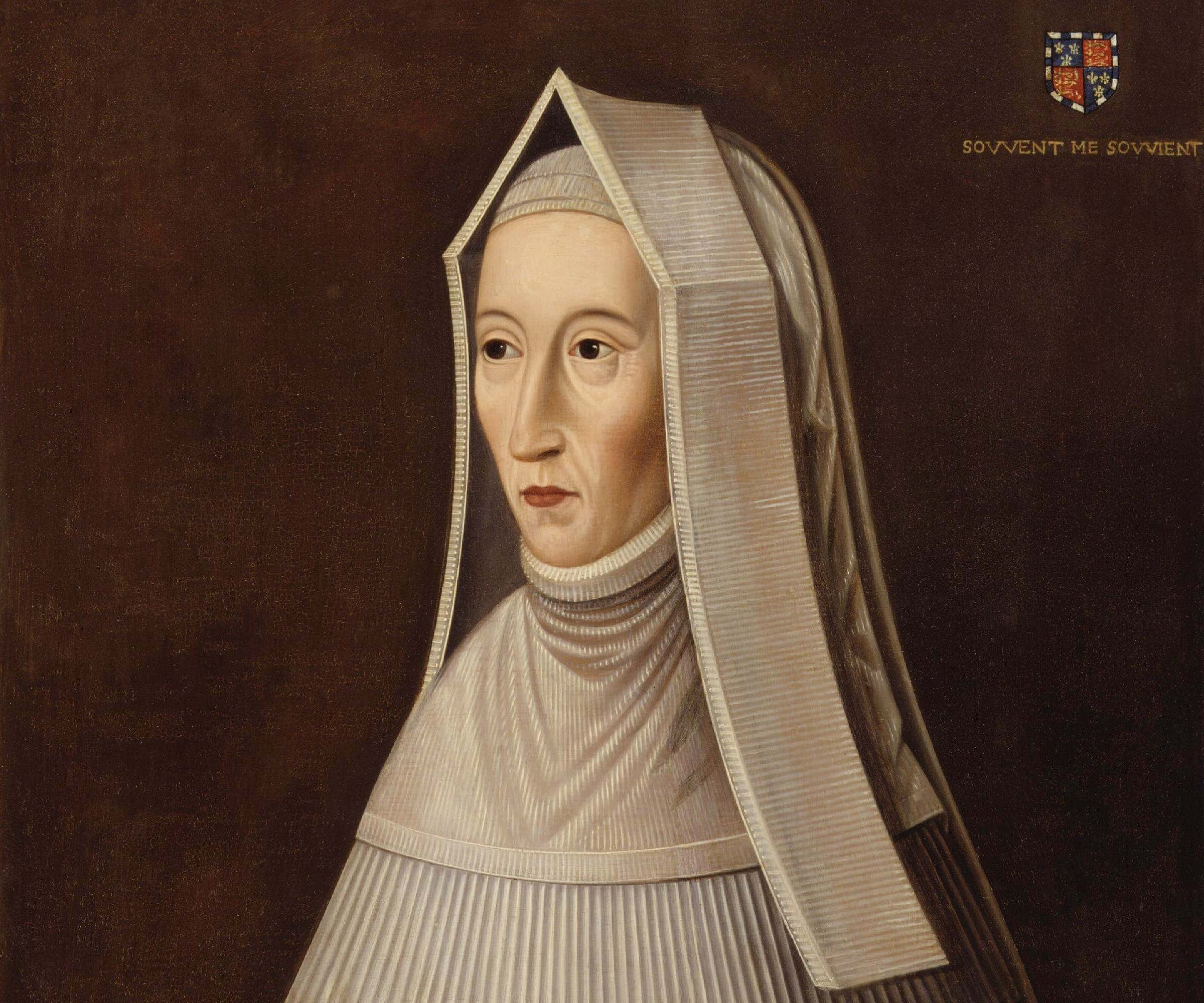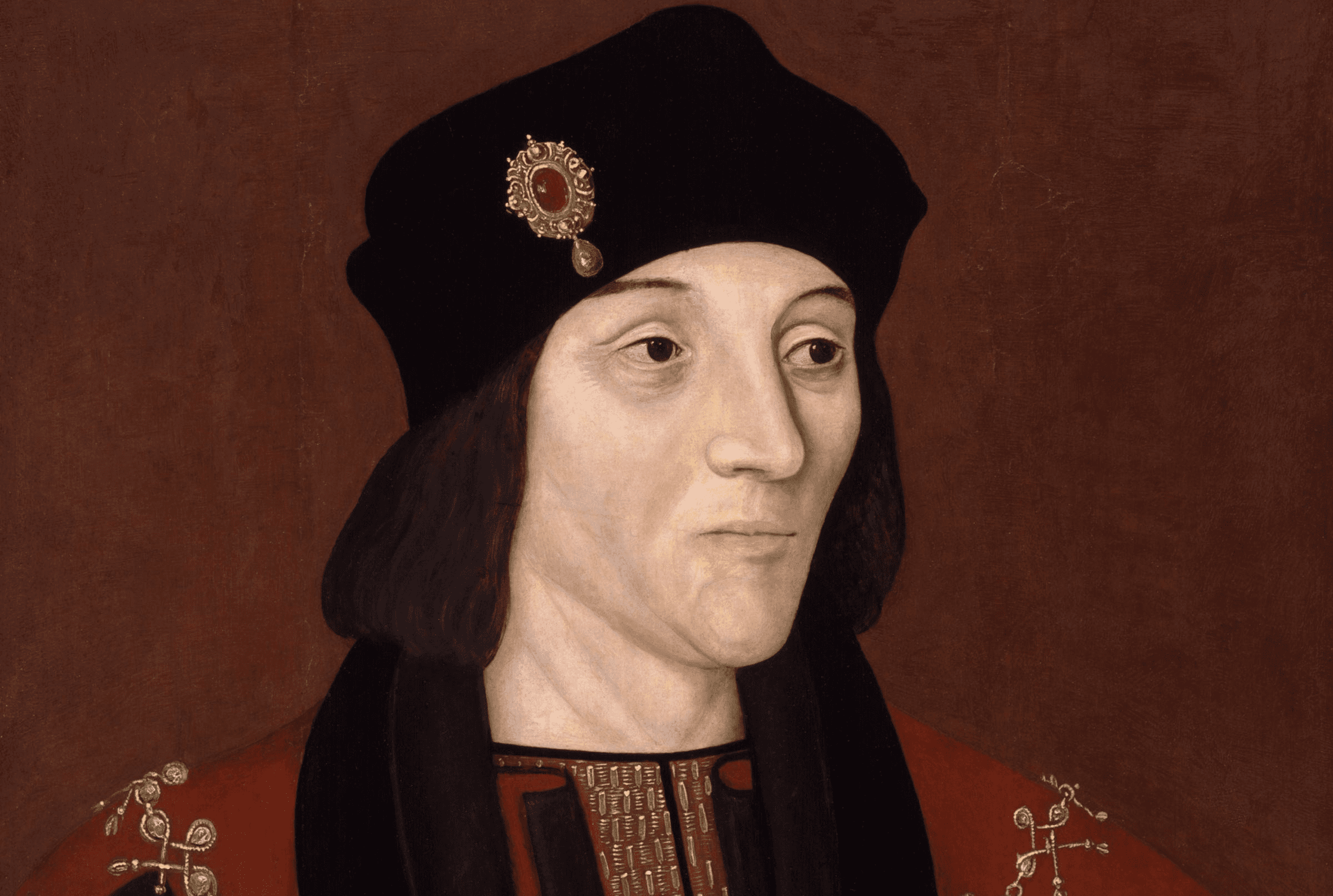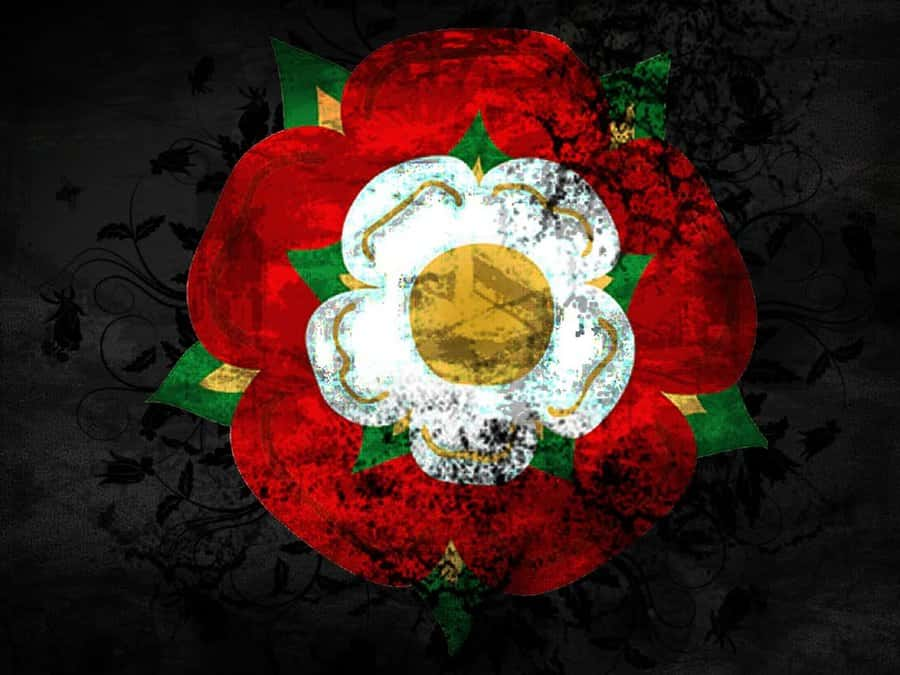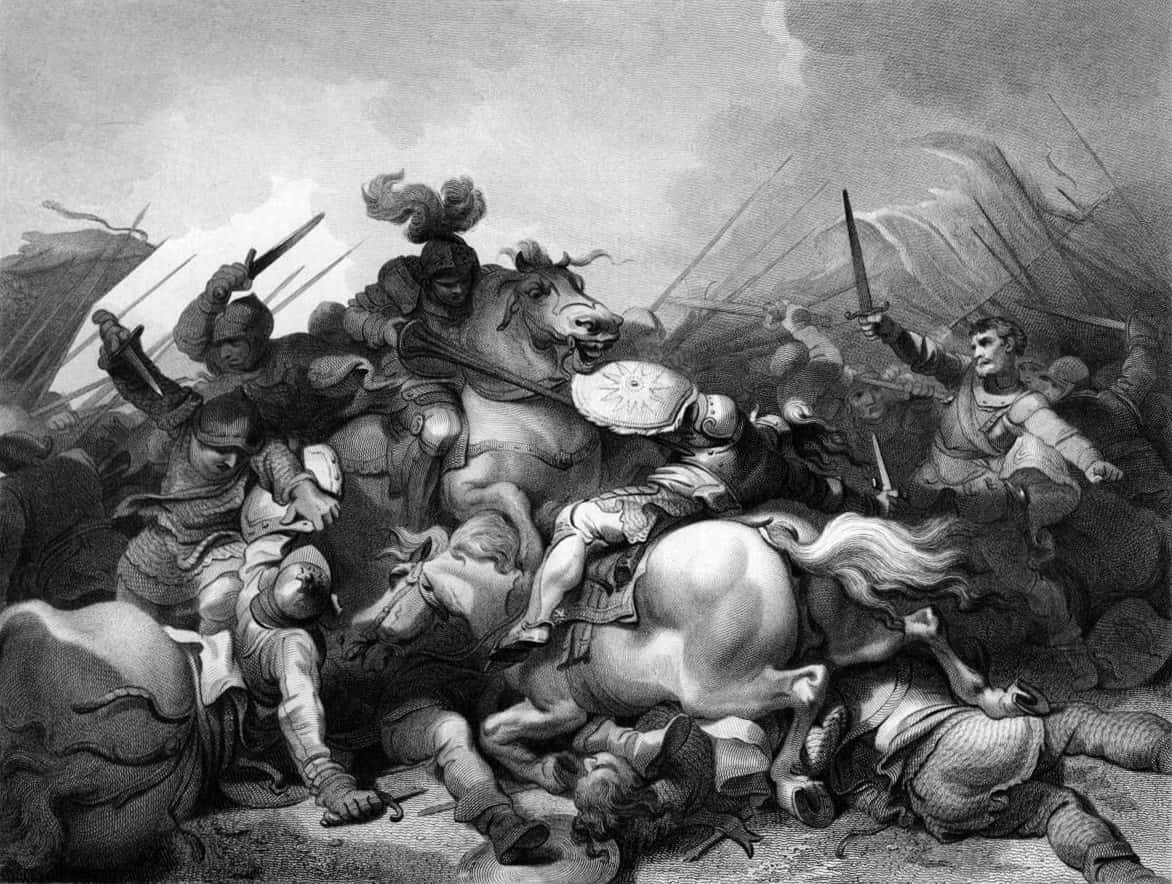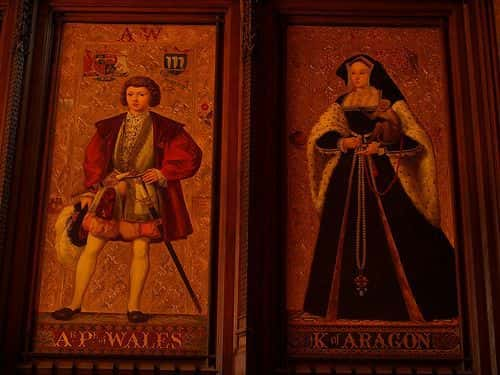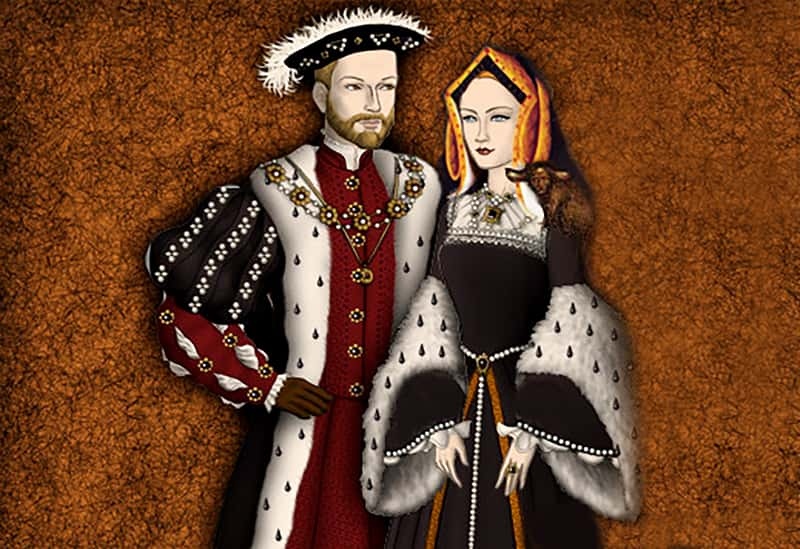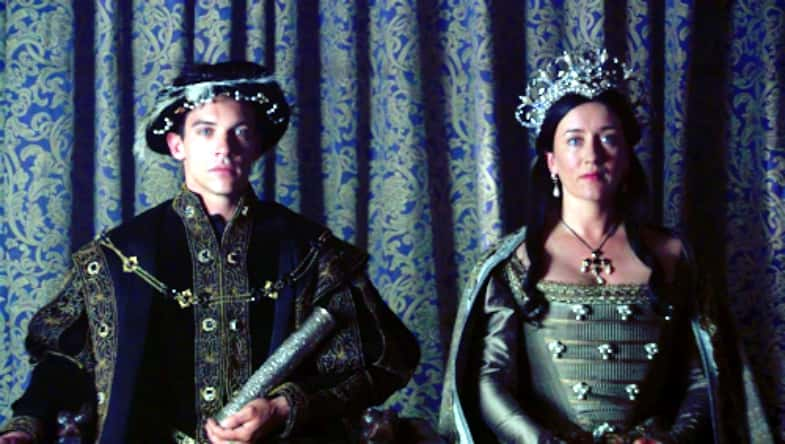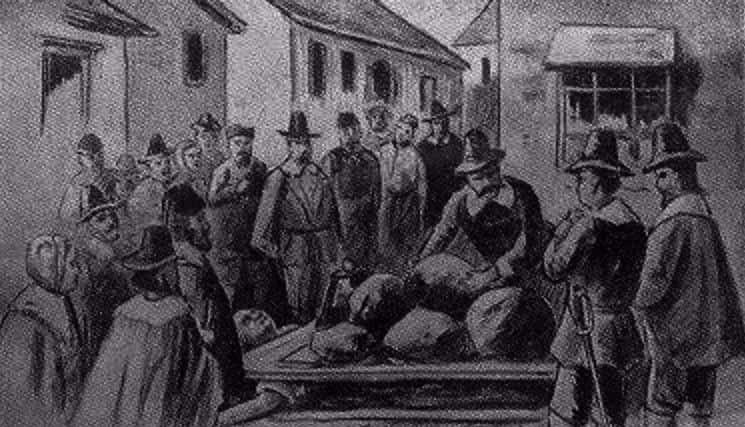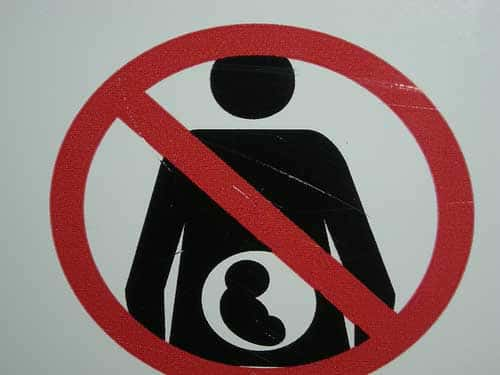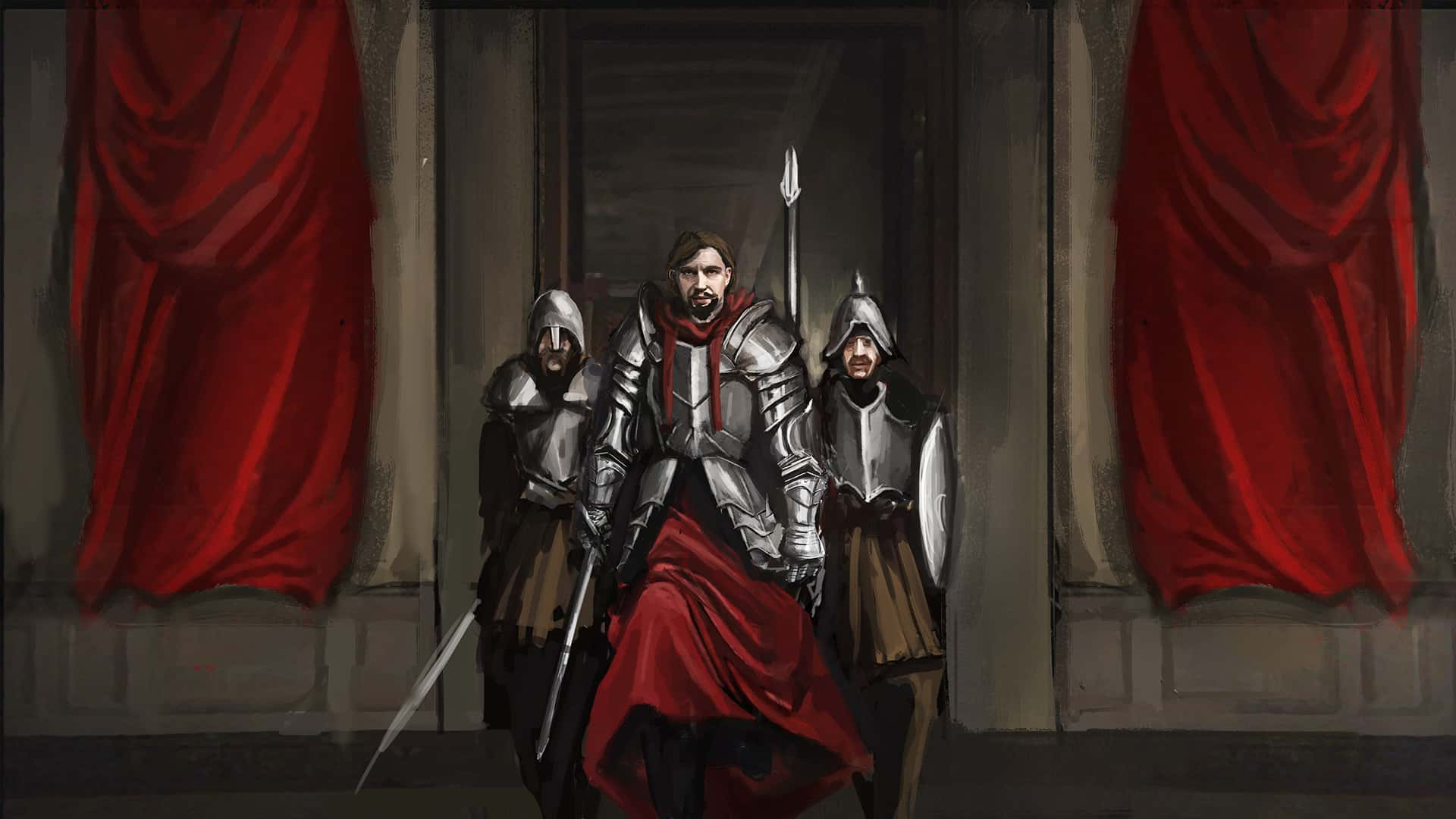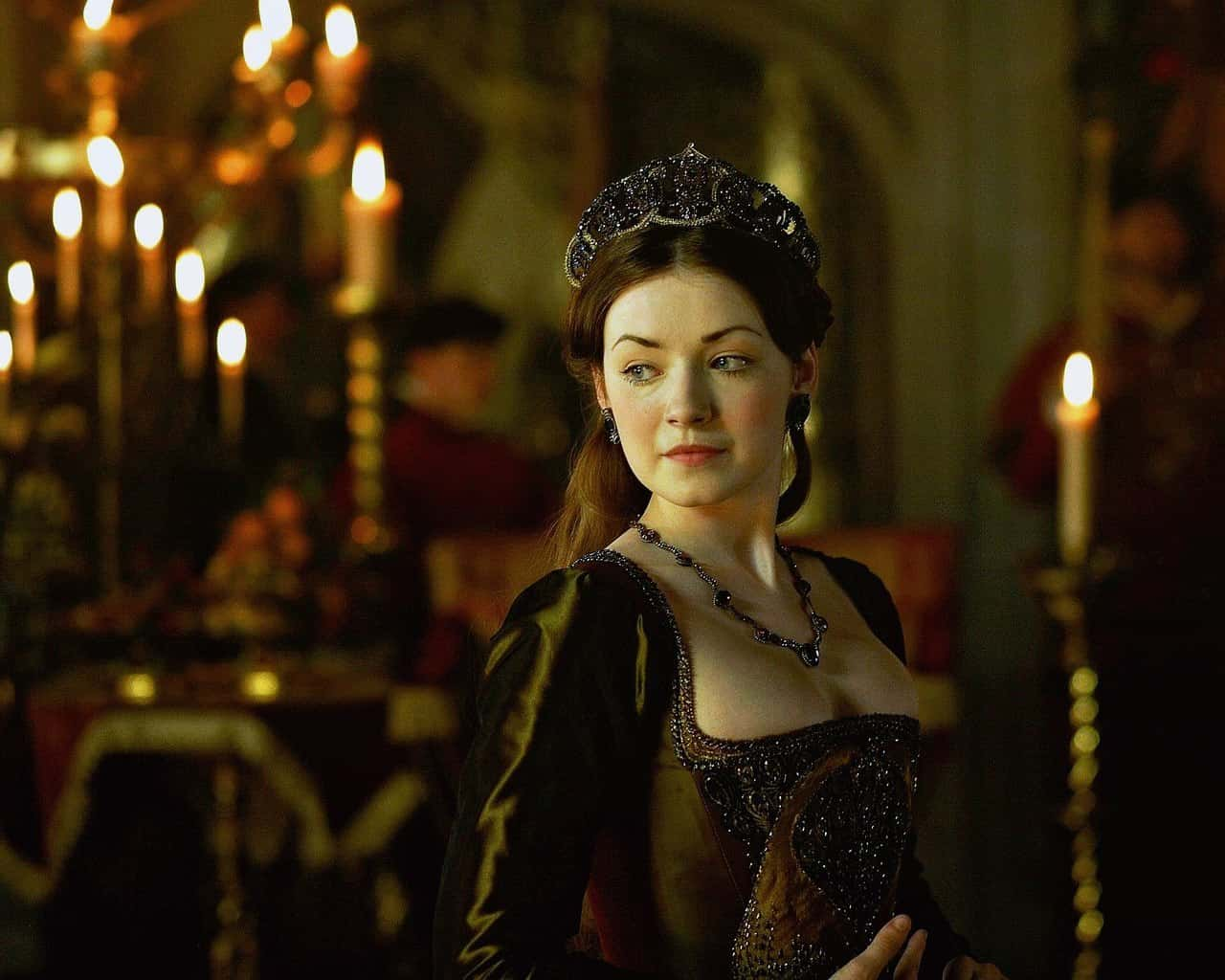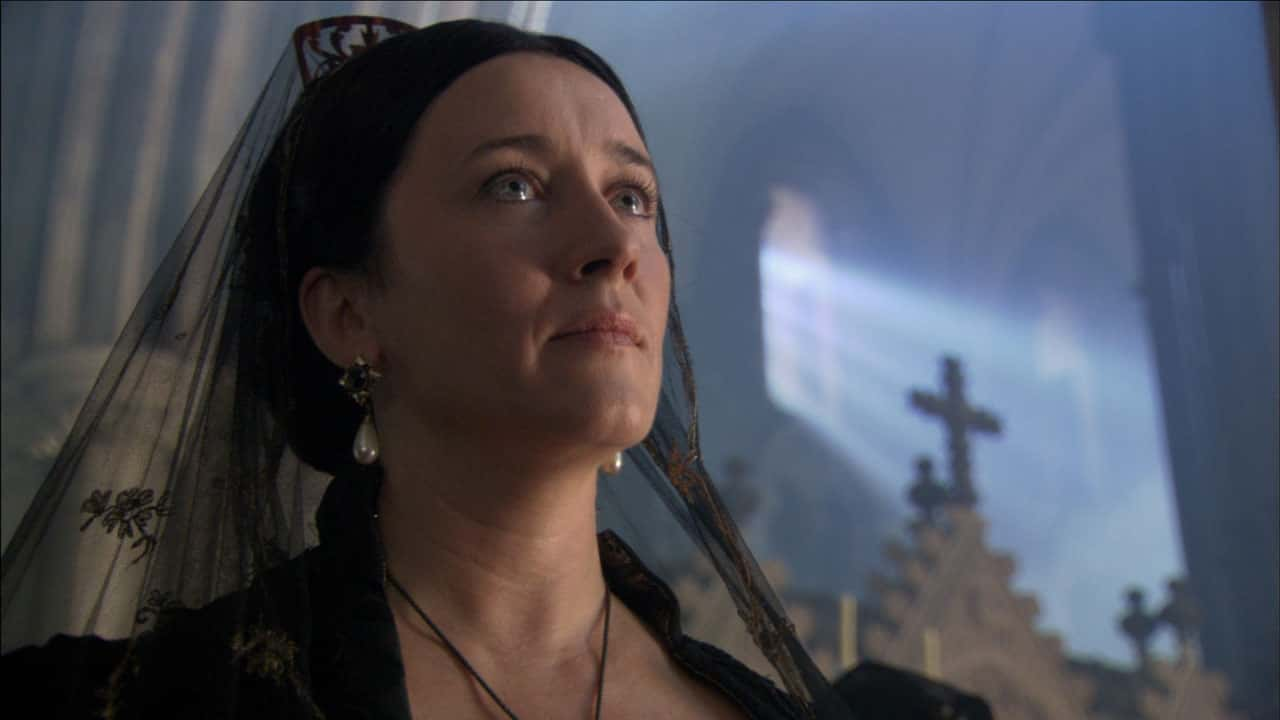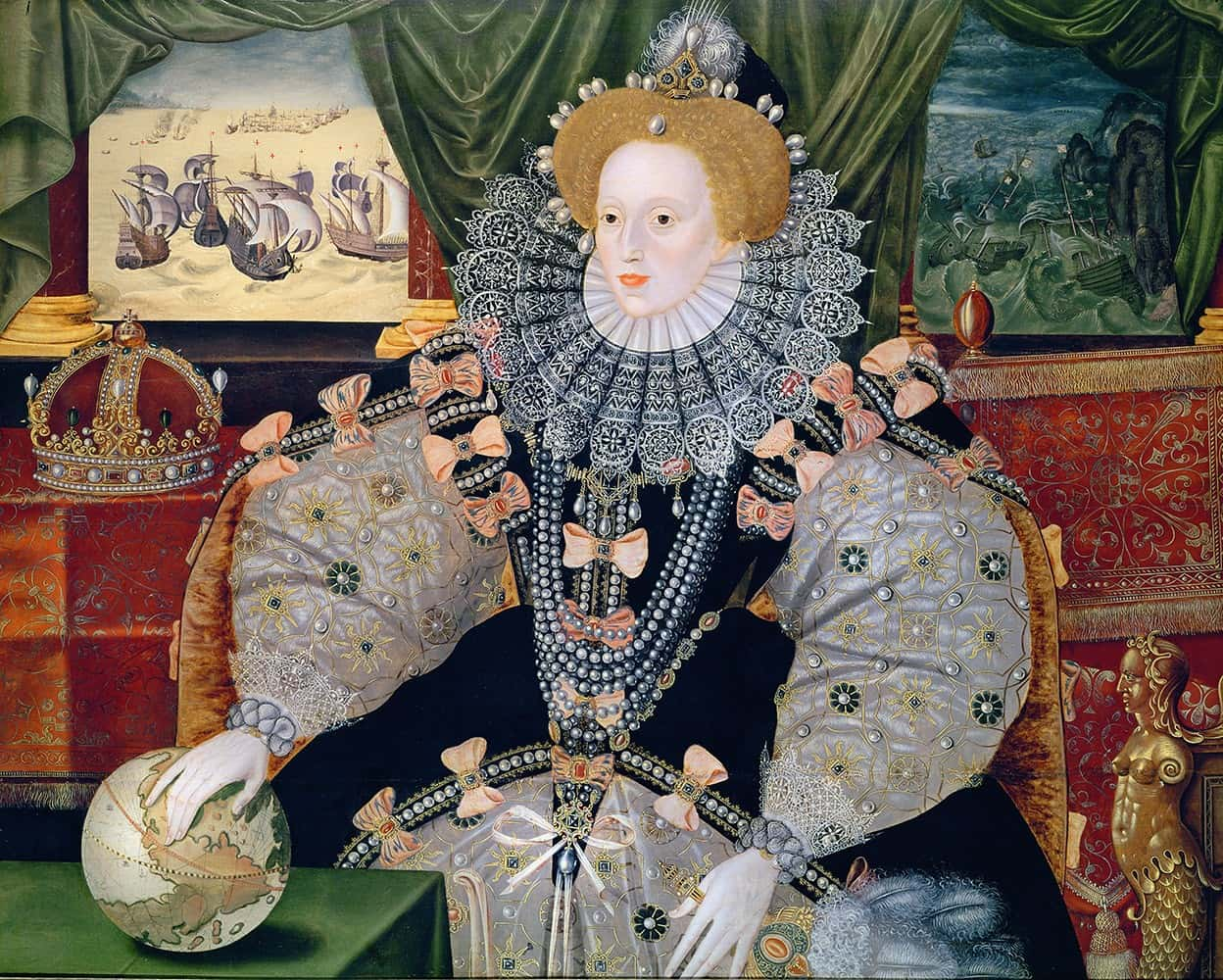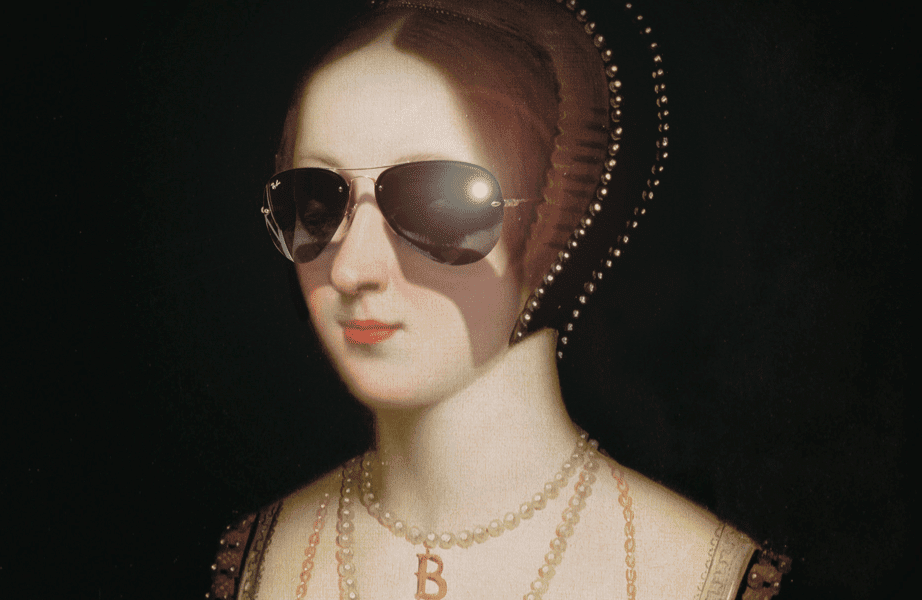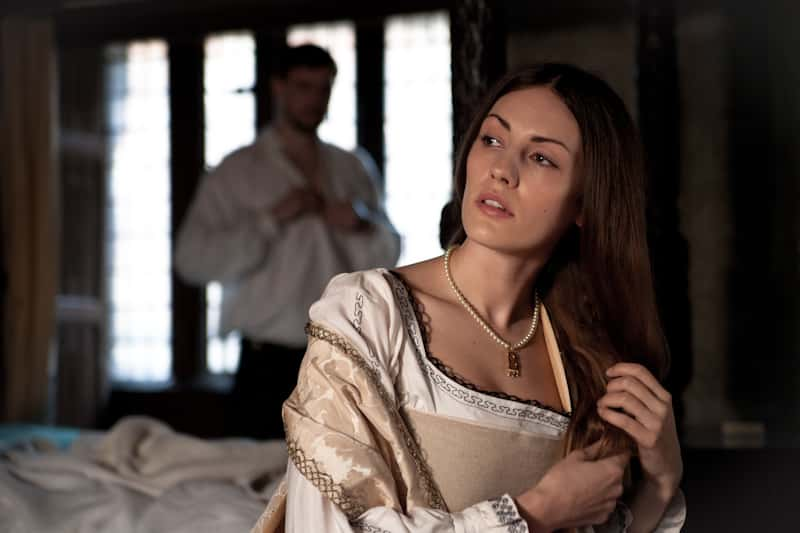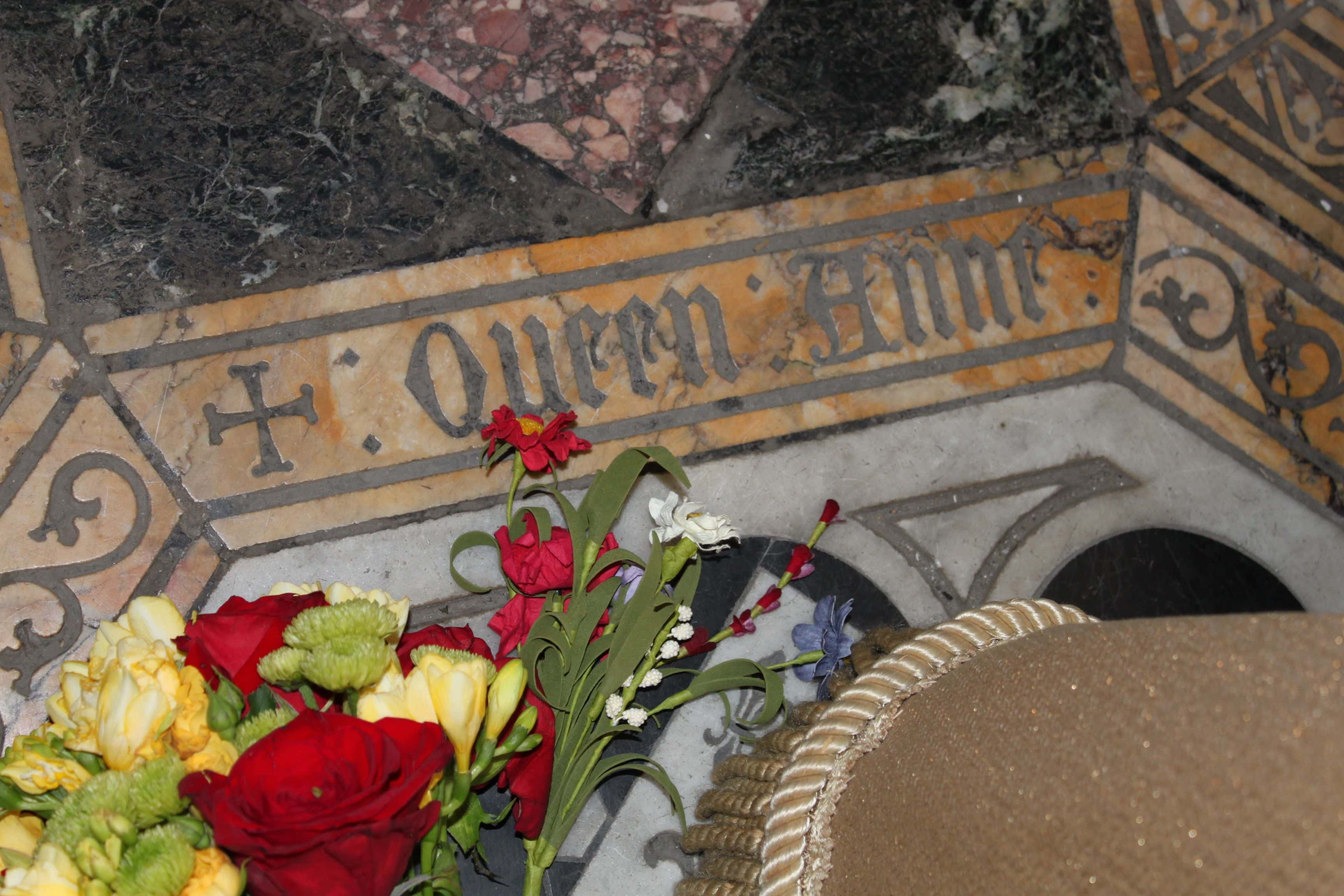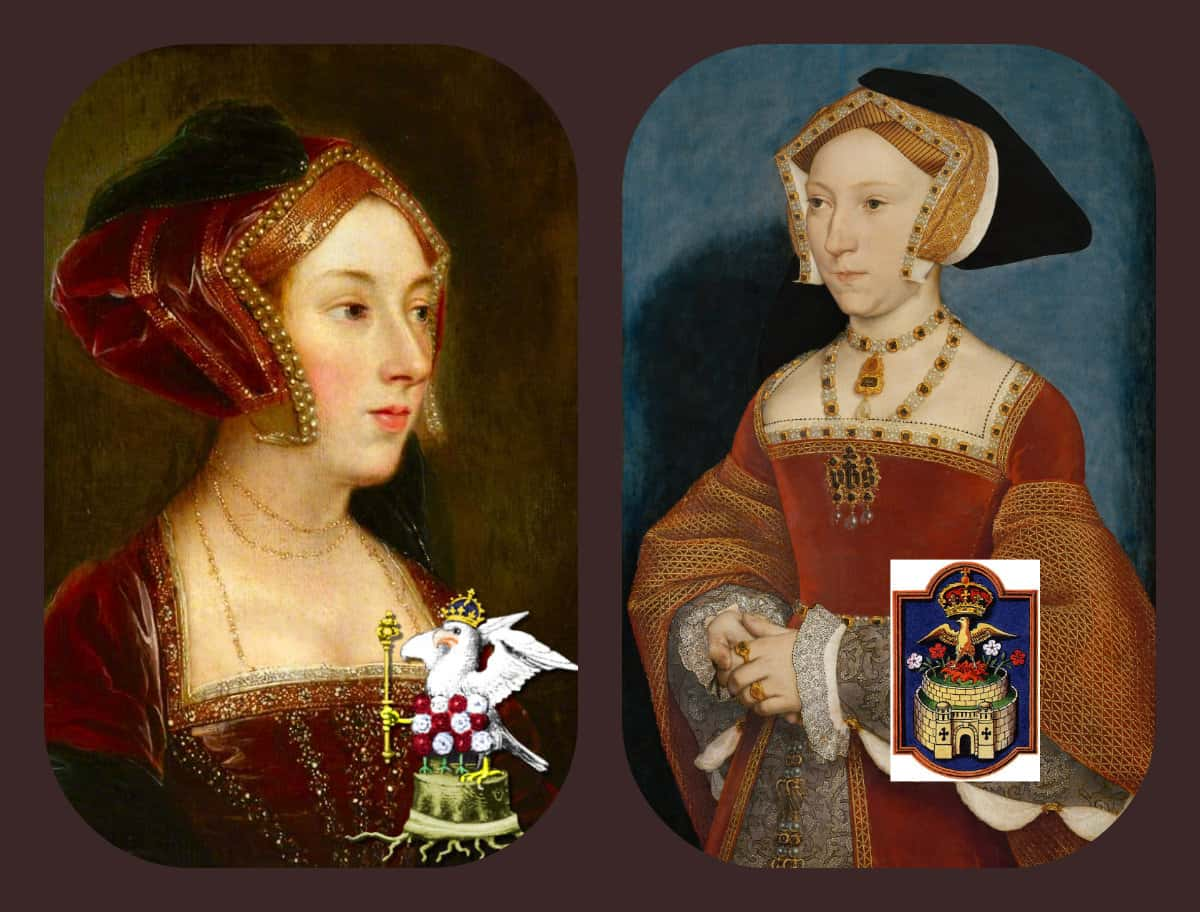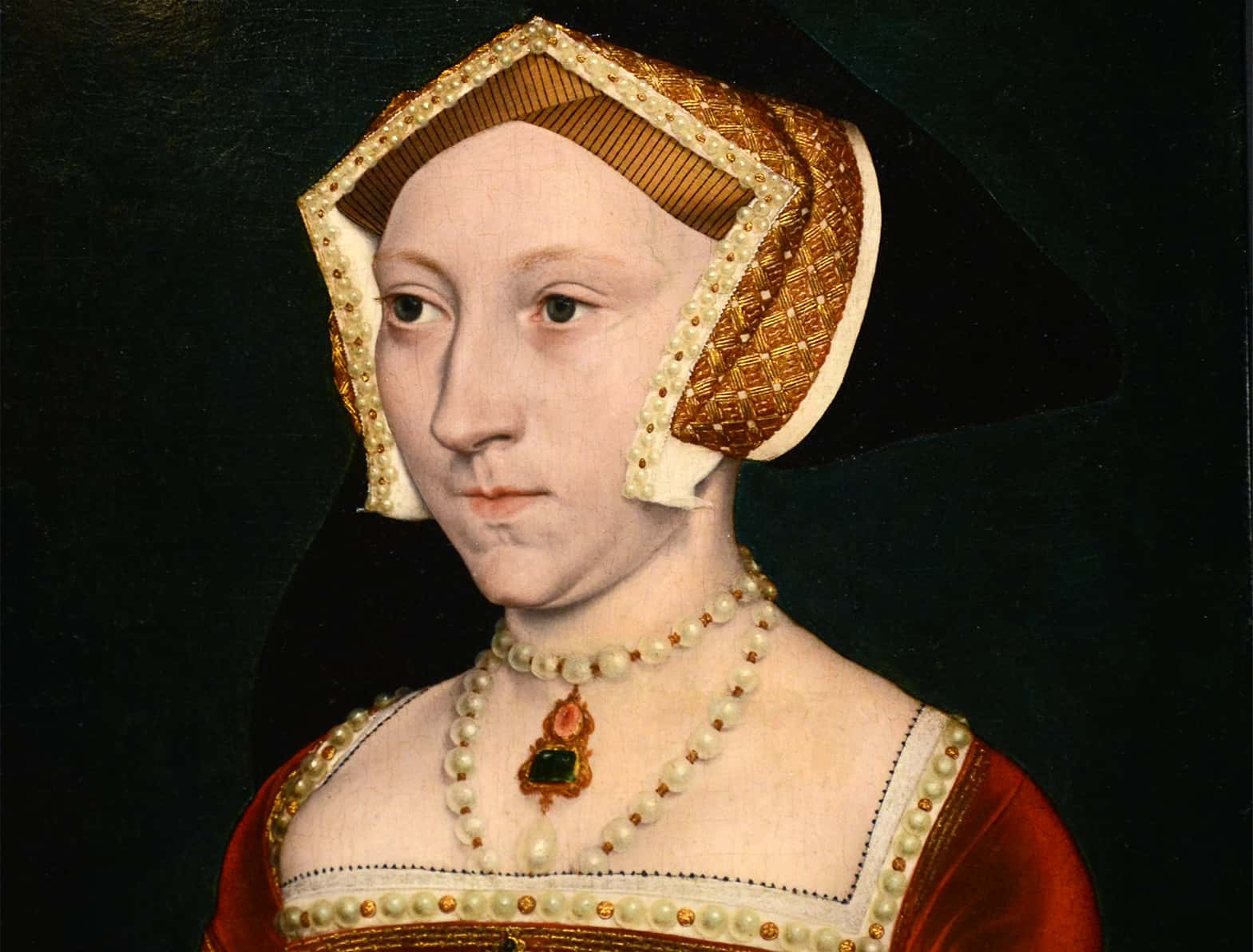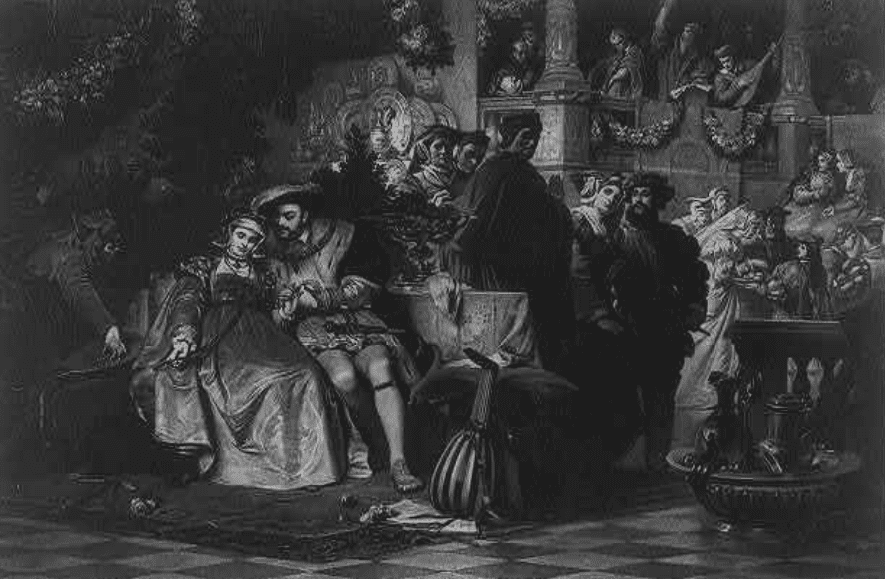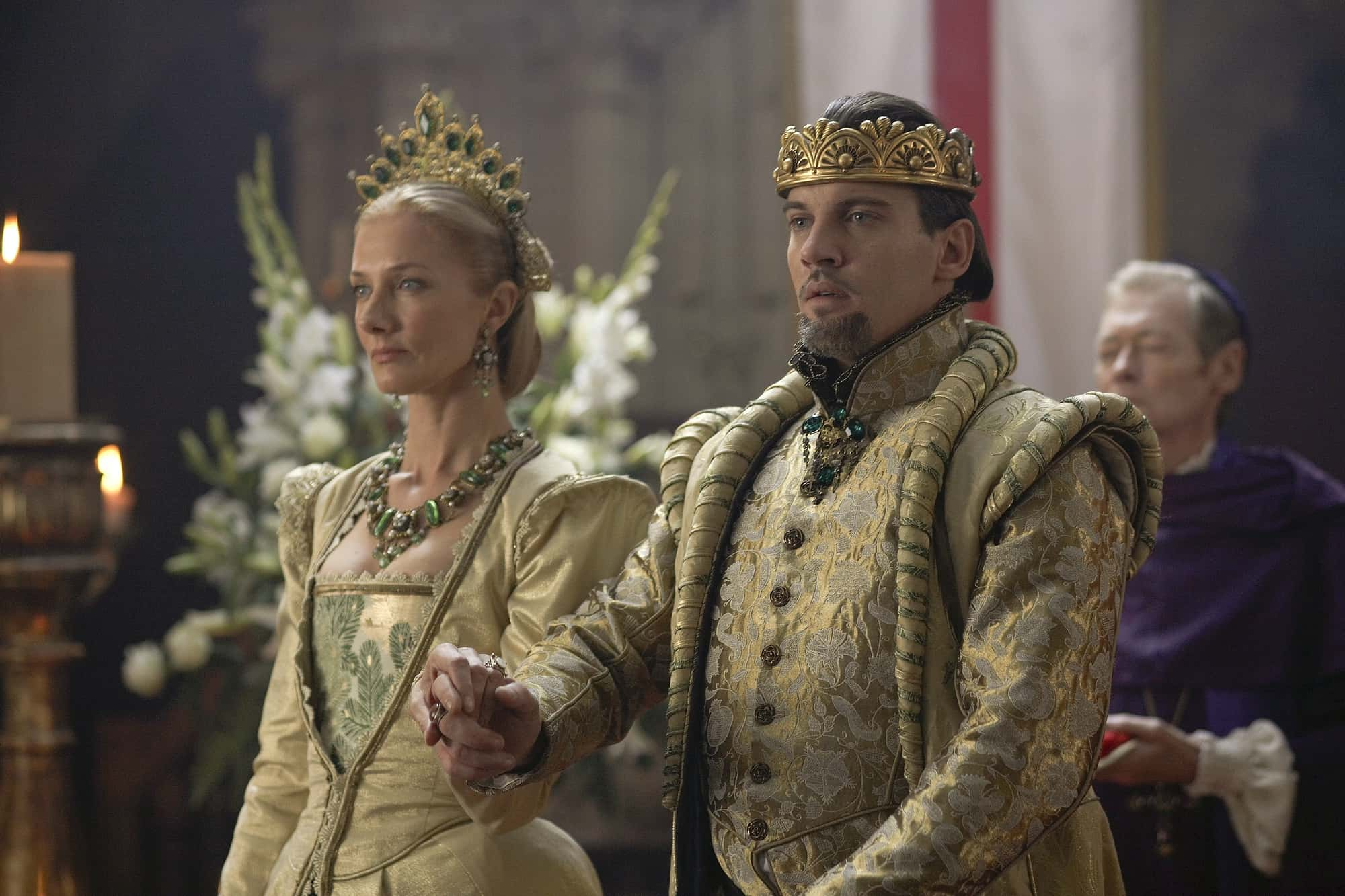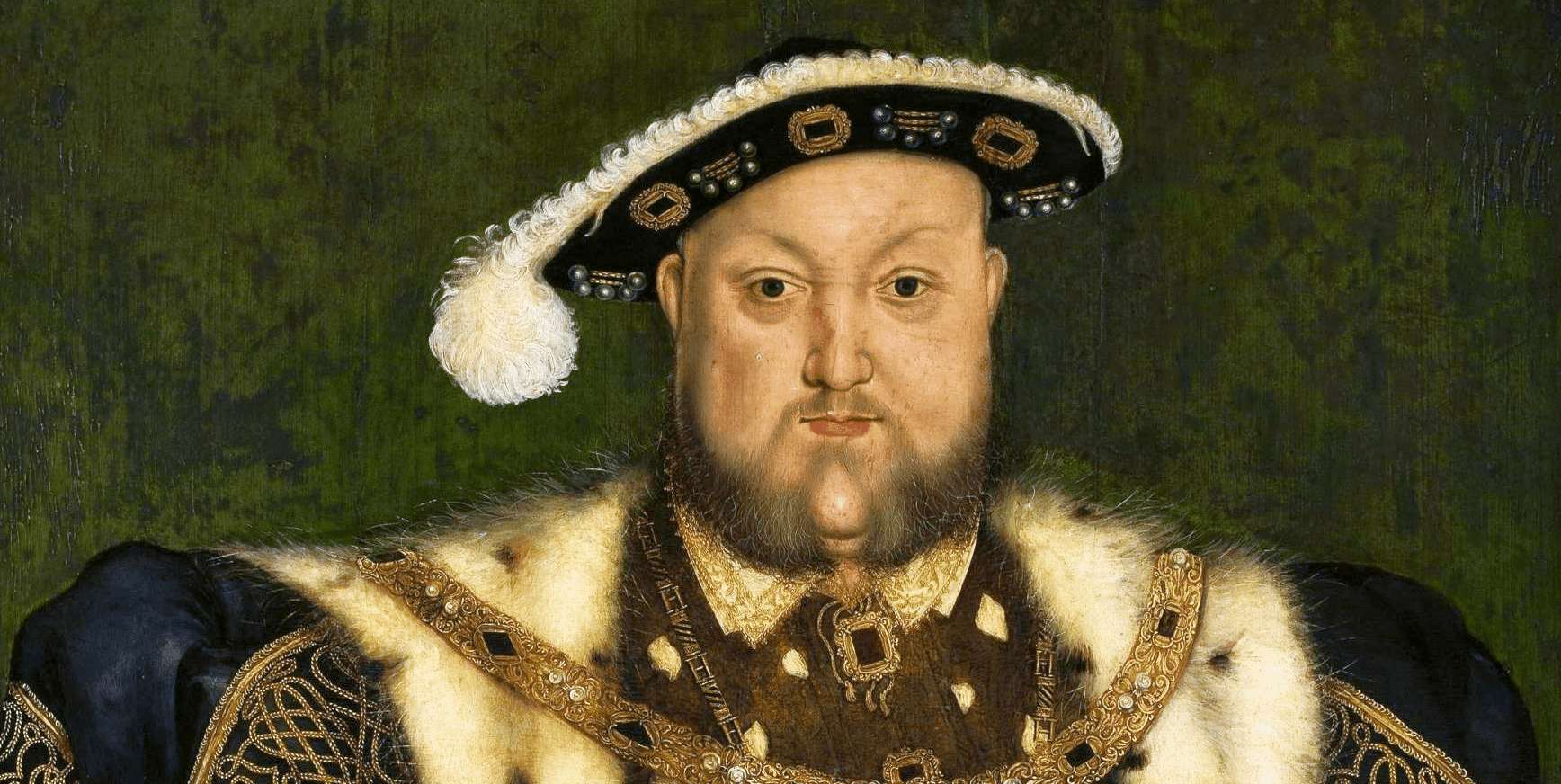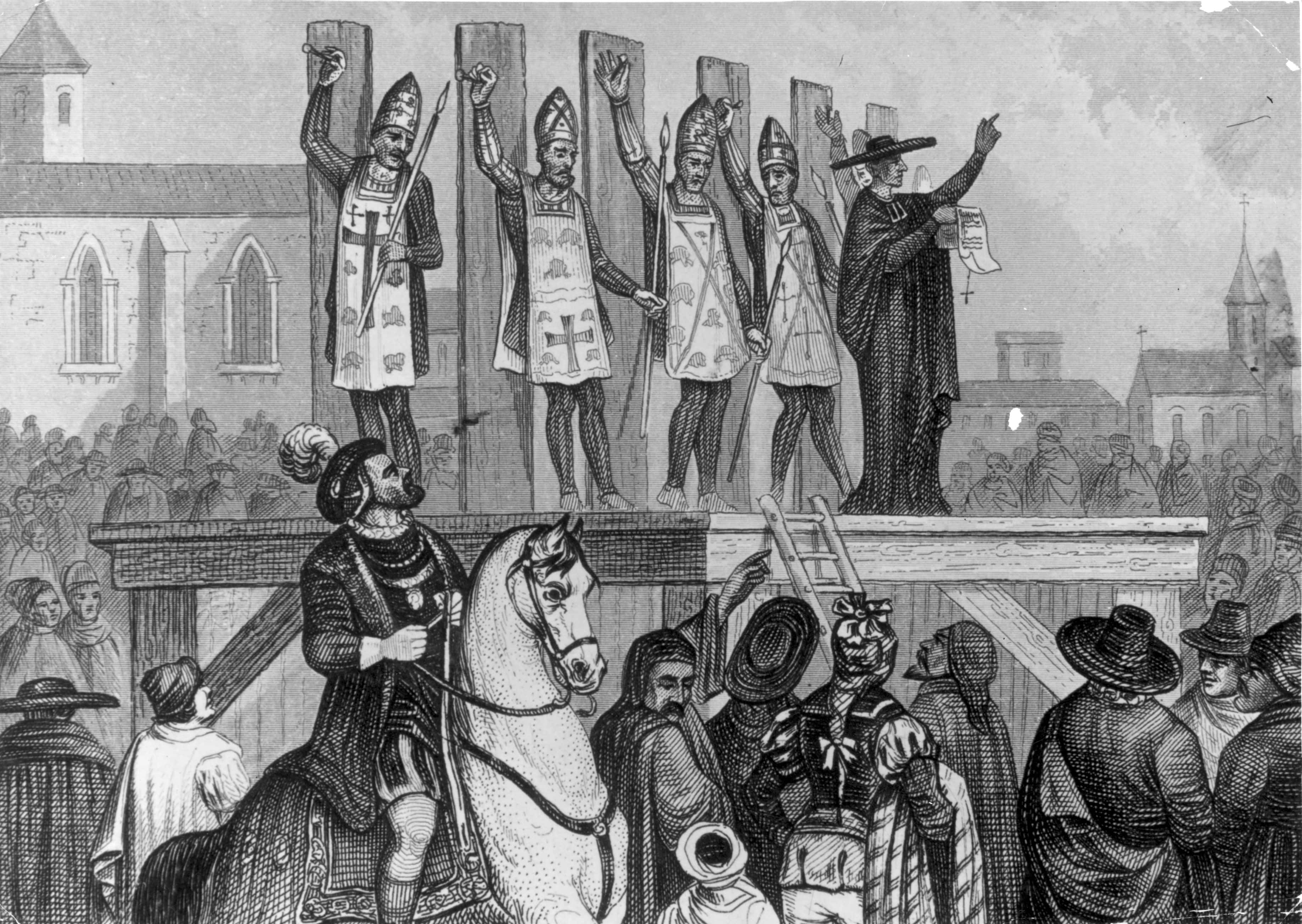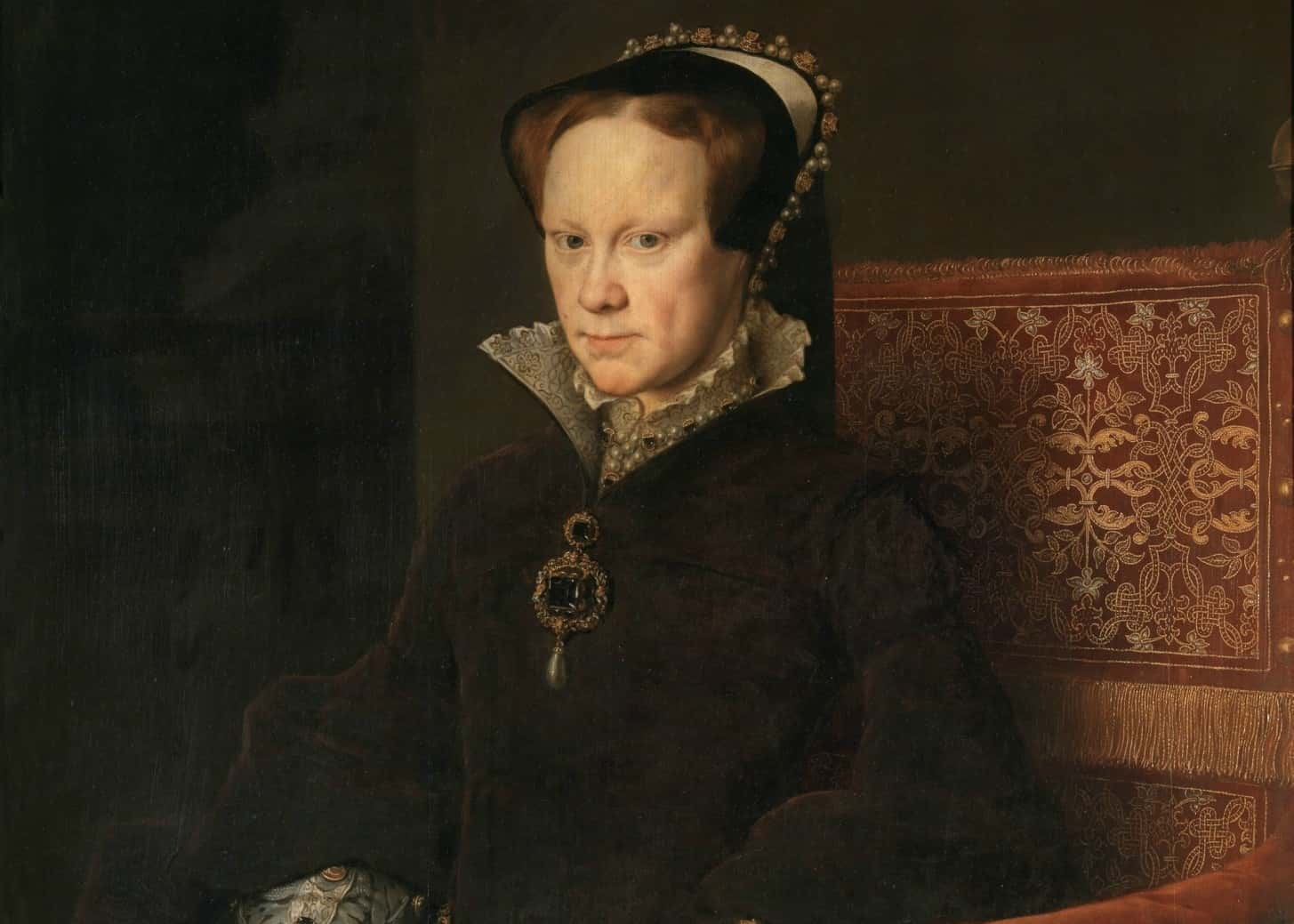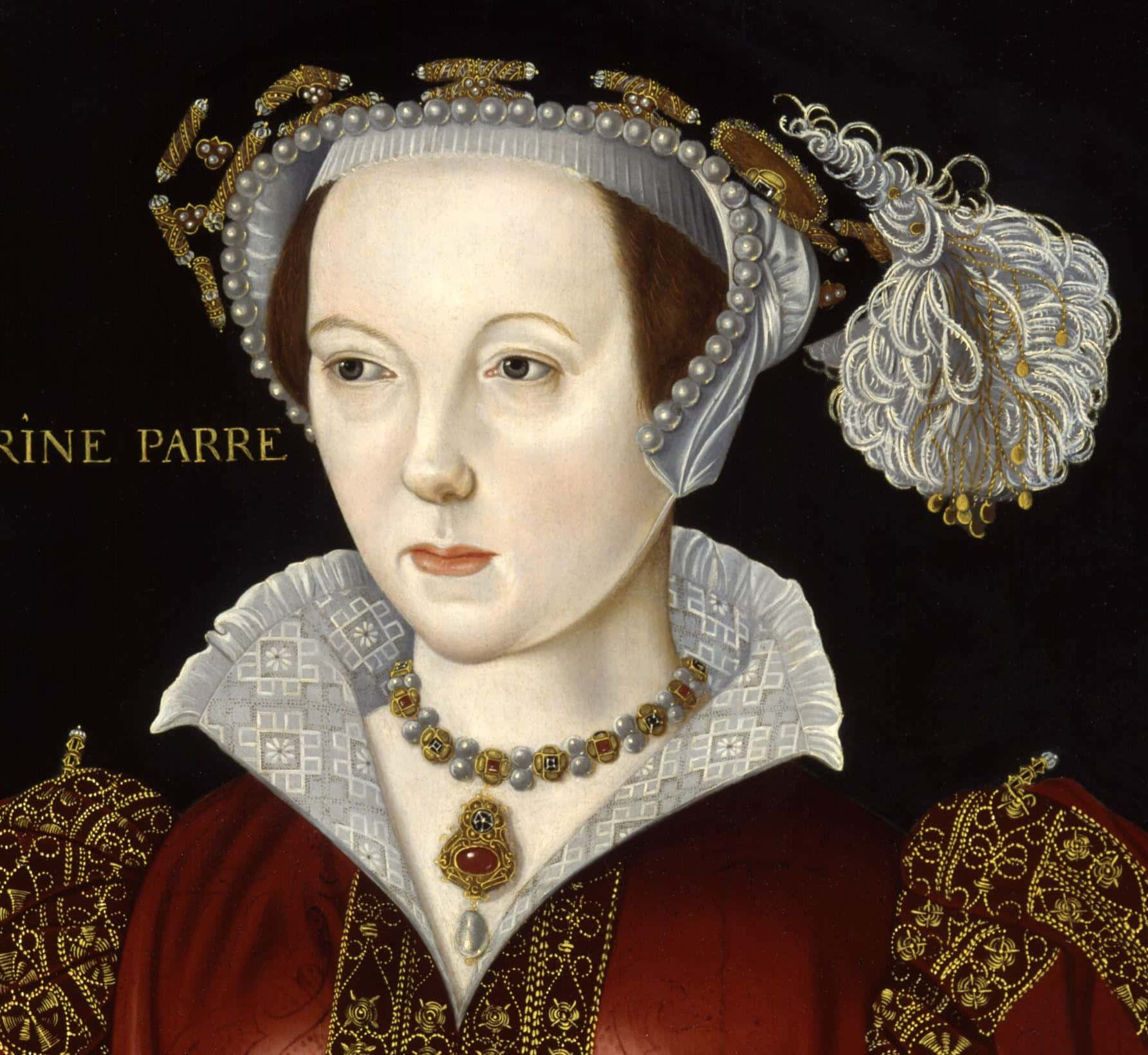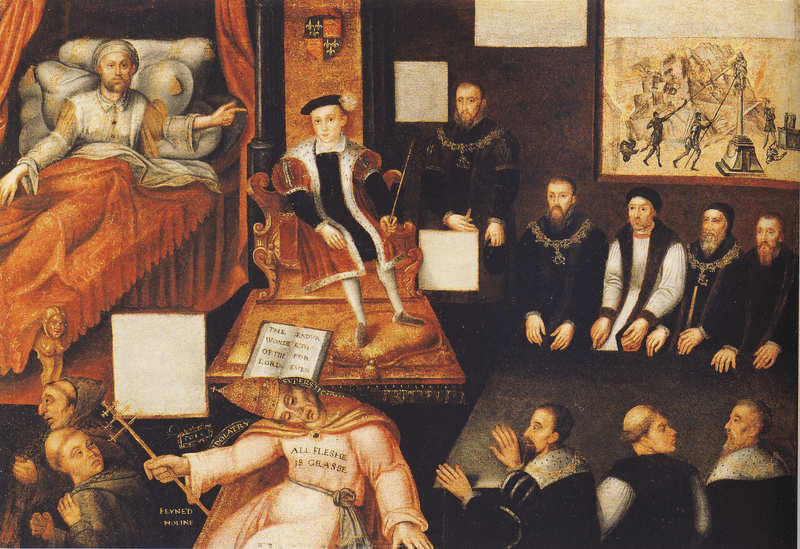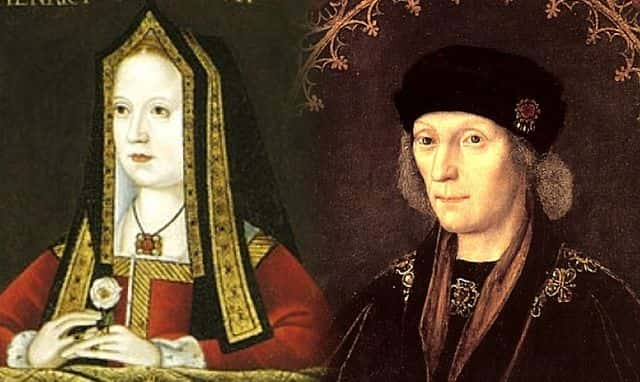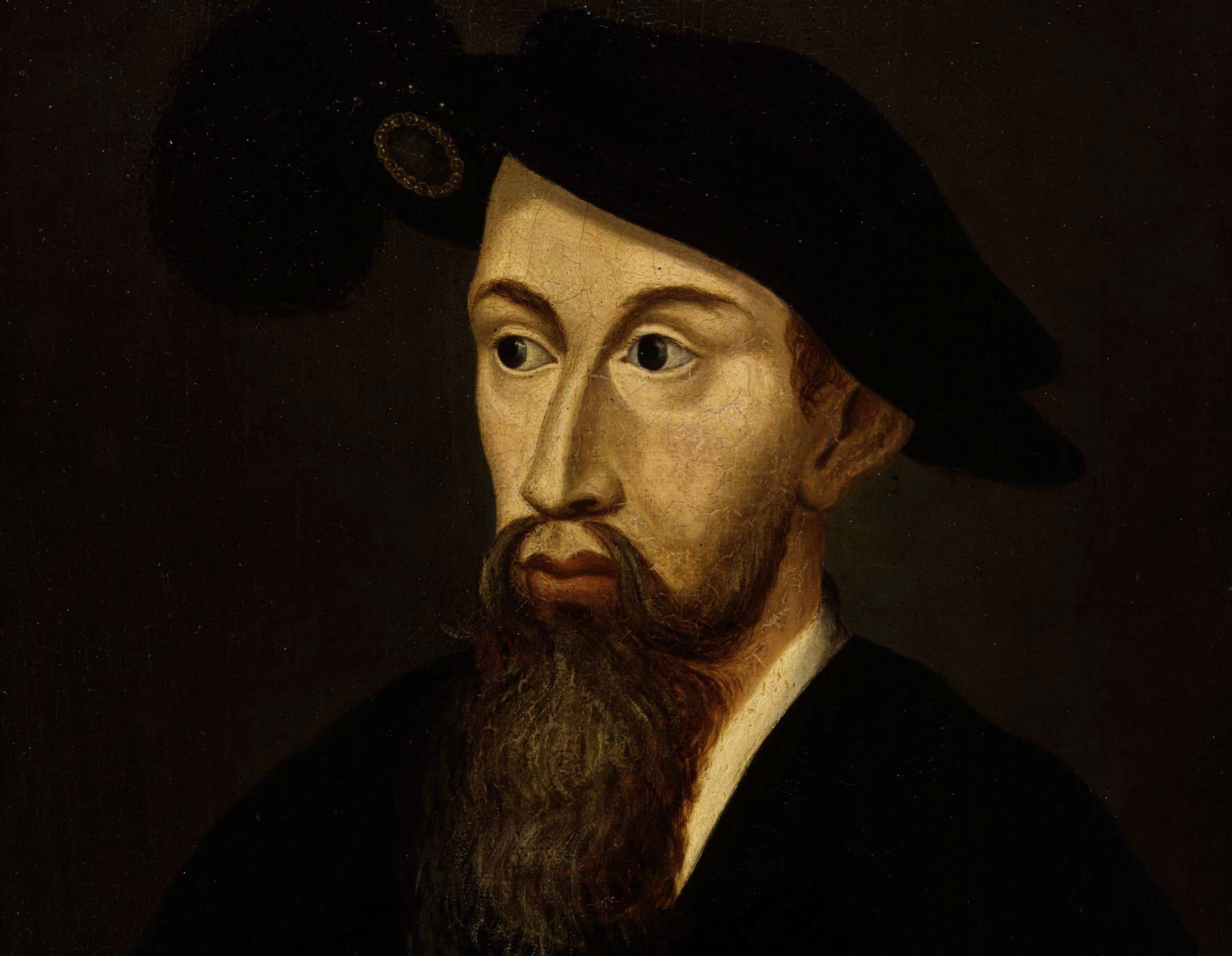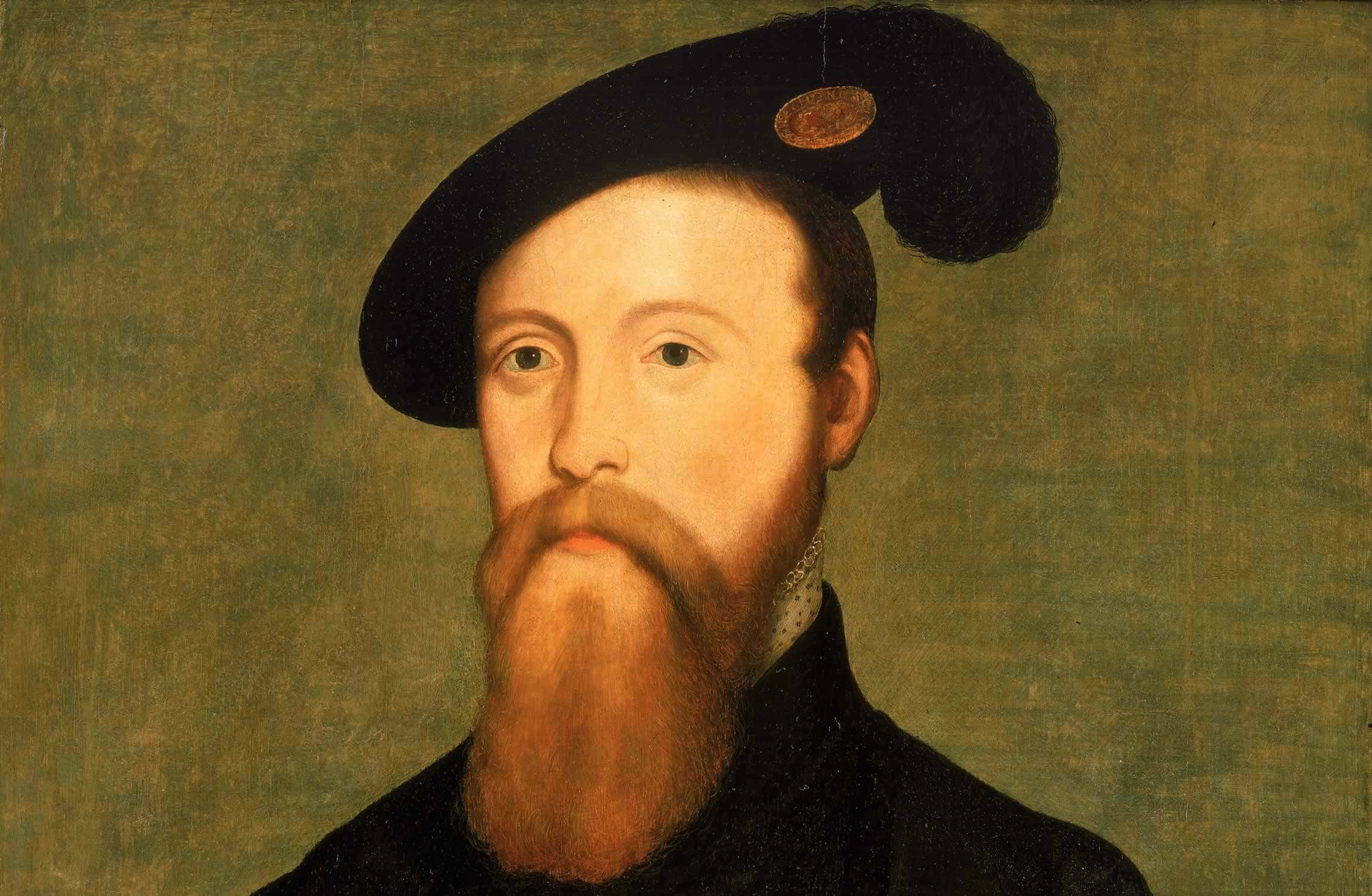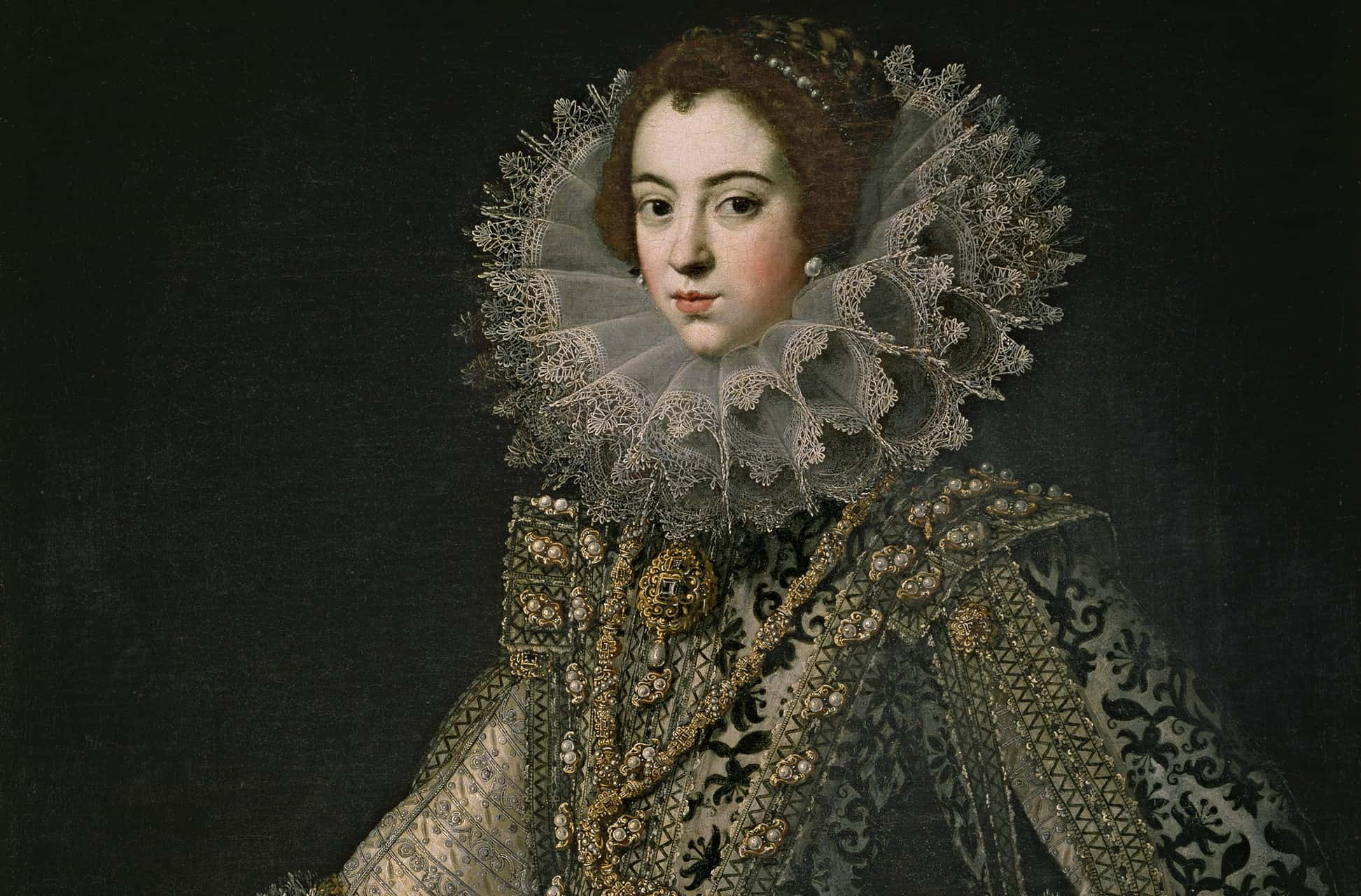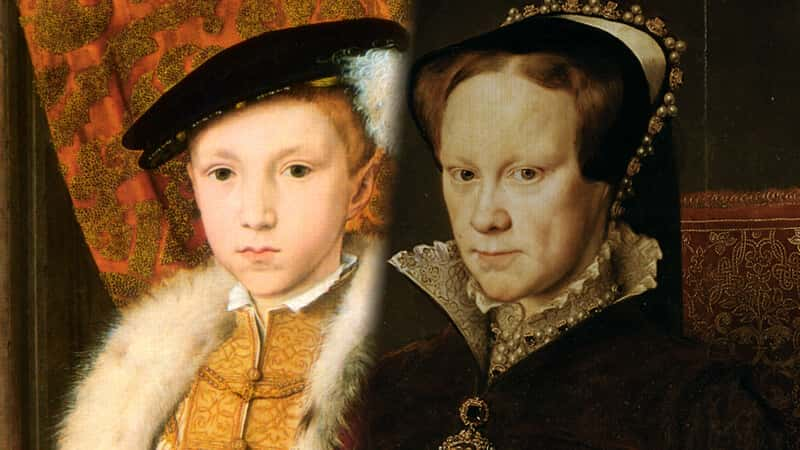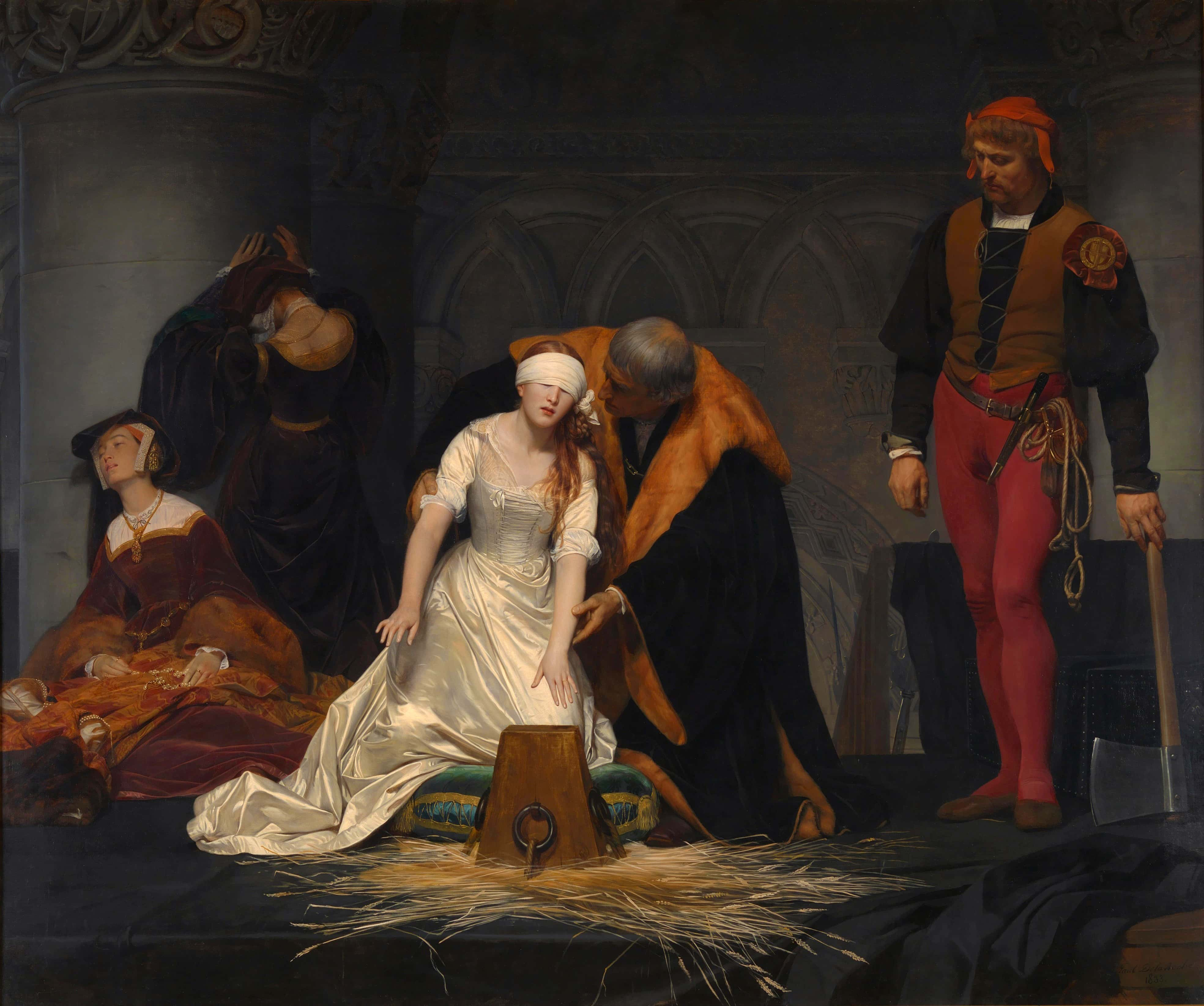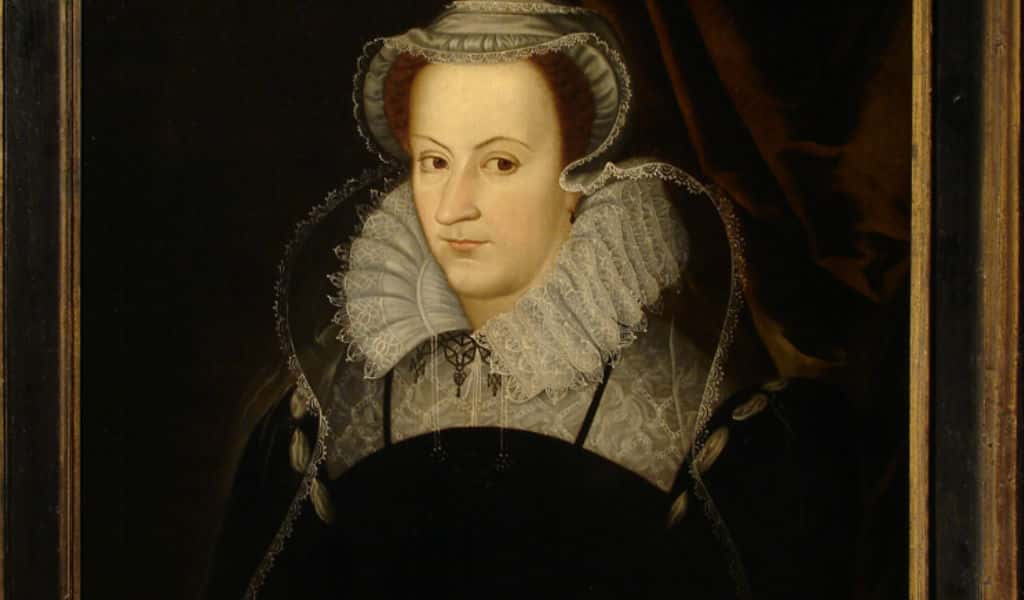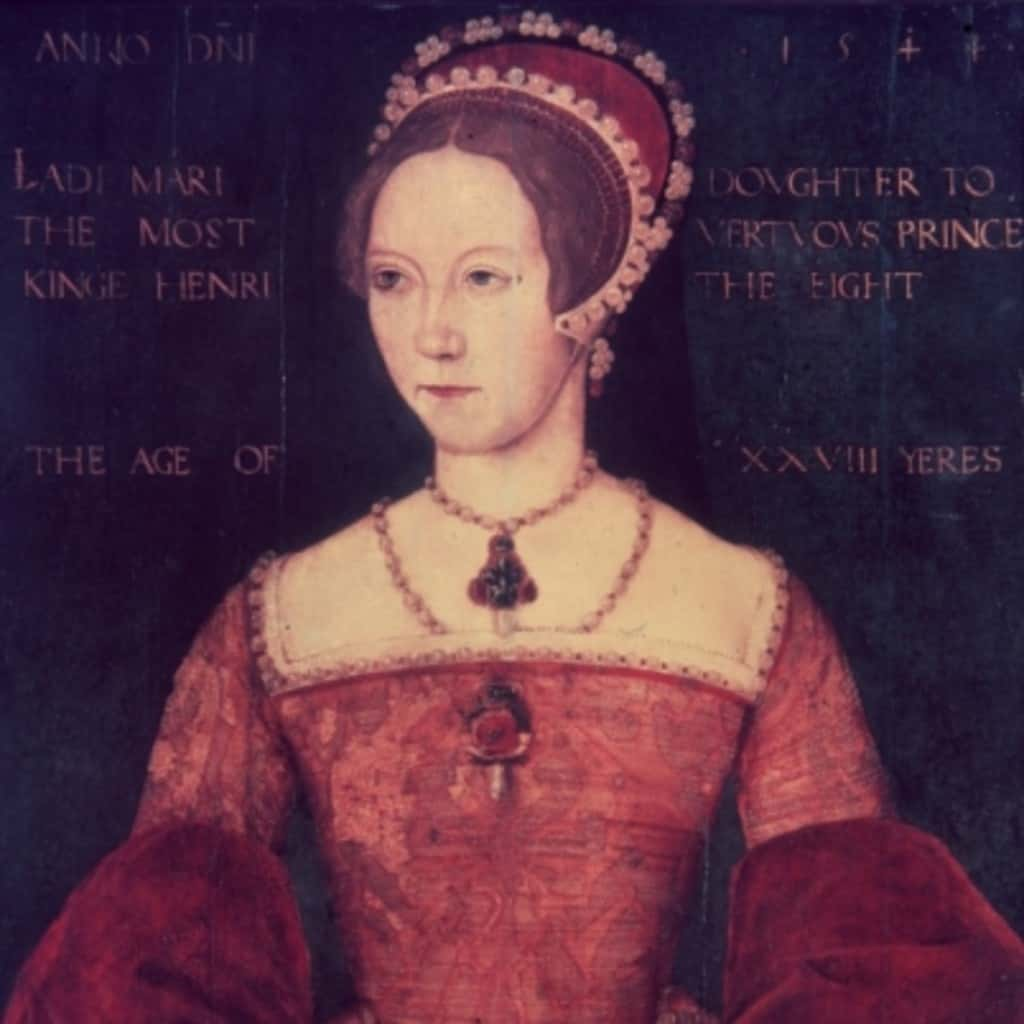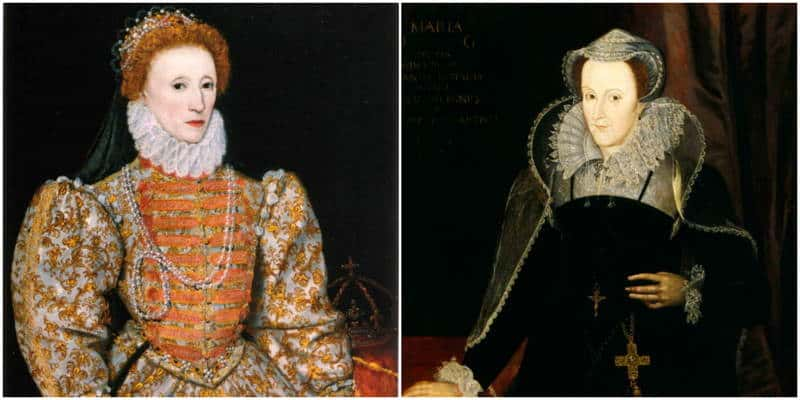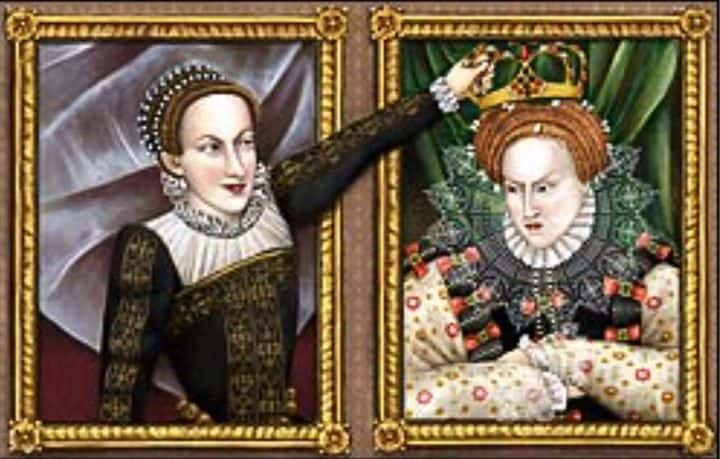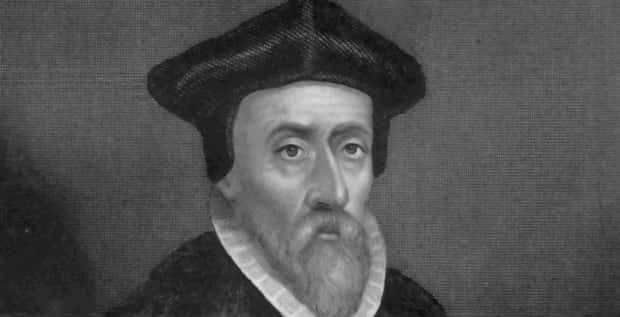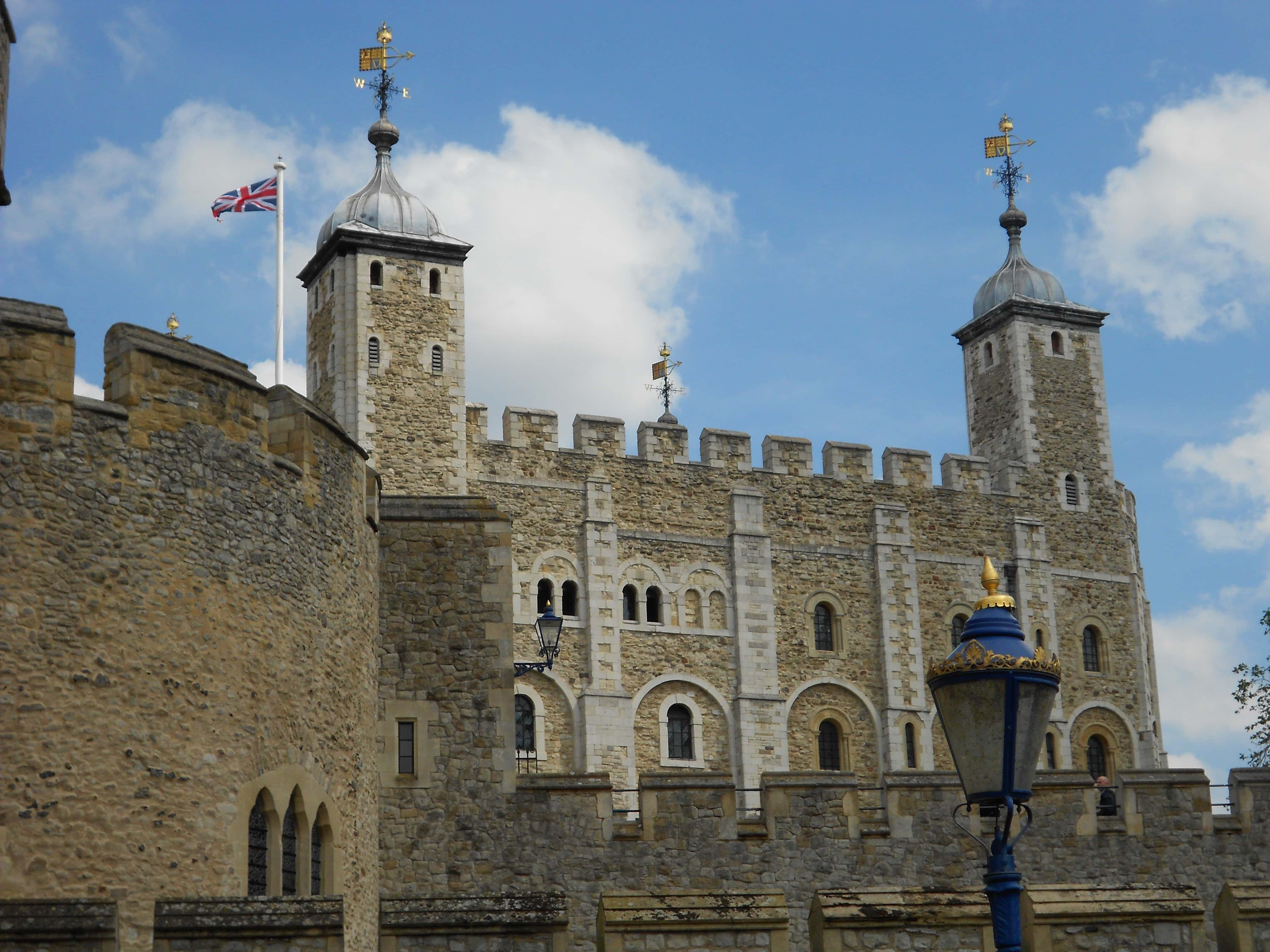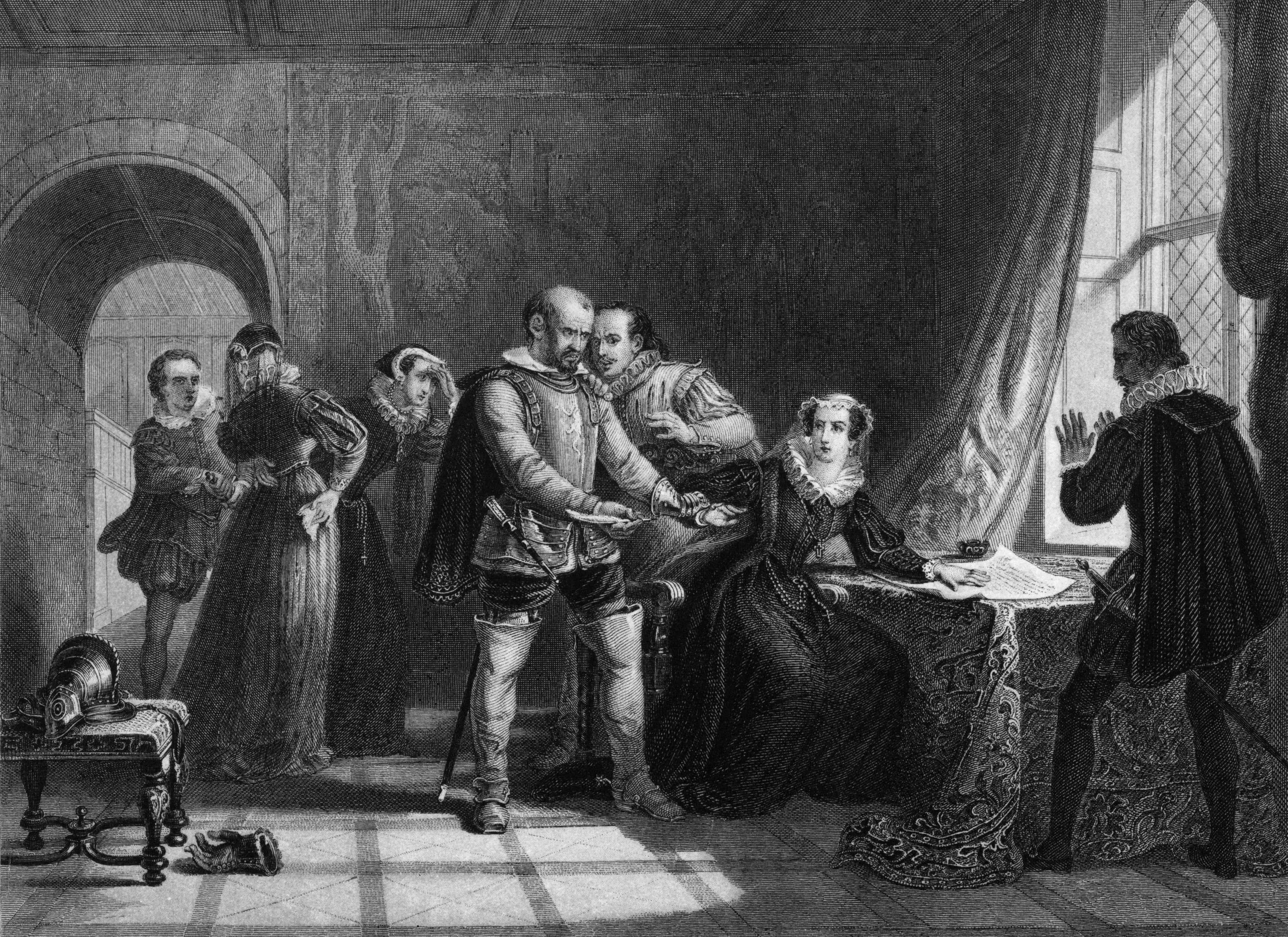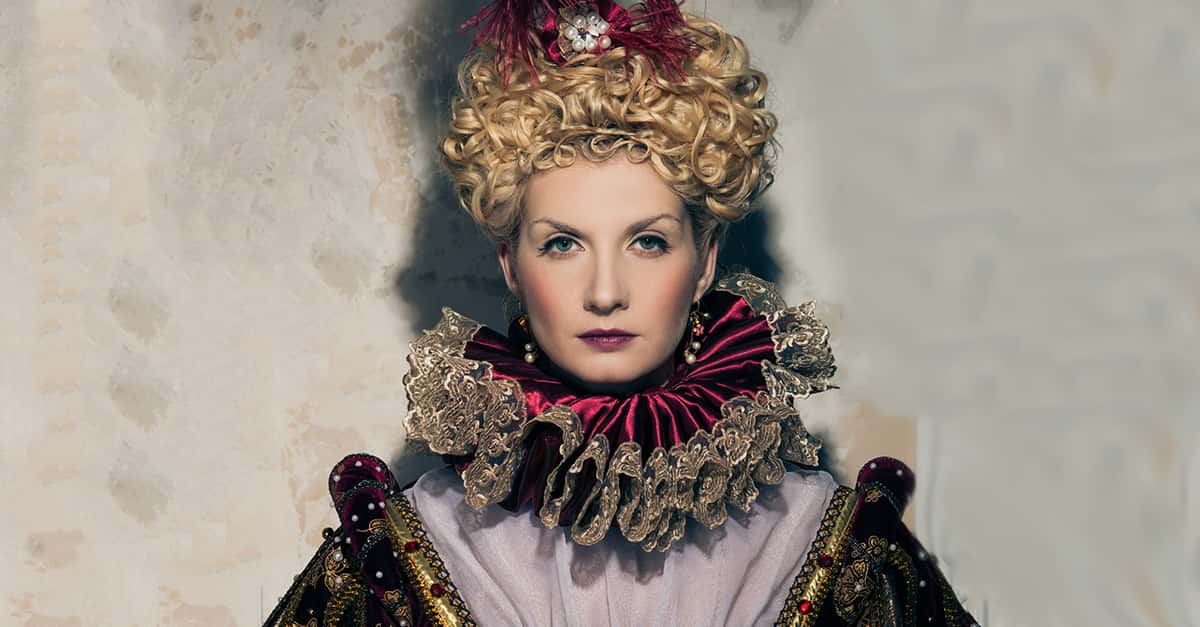On paper, the Tudor Dynasty lasted a relatively short period of time in the grand scheme of things, beginning with Henry VII's seizure of the crown in 1485 and ending with the unmarried, childless Elizabeth I's death in 1603. But the machinations that put Henry VII on the throne began much earlier, throughout the violent and tumultuous Wars of the Roses—and the reverberations of the reigns each of its monarchs would be felt for centuries afterward, shaping England and Europe as we know it today.
The Tudor Dynasty produced some of the most infamous monarchs in history, from Henry VIII to Bloody Mary to the Virgin Queen, Elizabeth I—not to mention the lesser-known Tudors, like Henry VII, the man who started it all (or did he?) and the short-lived Edward VI. And that's not to mention the fascinating lives of the people who orbited around them, including Henry VIII's doomed wives, like the infamous Anne Boleyn, or the scheming Seymour brothers, the courtiers who first tried to creep on Elizabeth before moving on to battle over the orphaned Edward VI. Whether or not you're familiar with the Tudor Dynasty, the story behind their time on the throne is one heck of a wild ride. Here are 100 facts about history's most scandalous dynasty.
Facts About The Tudors
1. It Takes Two, Baby
It all began with one couple: Edmund Tudor and Lady Margaret Beaufort. In fact, Lady Margaret Beaufort is the stuff of historical novelist dreams. As a child during England’s Wars of the Roses between the Lancasters and the Yorks, she gave birth to a child herself: Henry VII, who would begin the all-new Tudor Dynasty.
Over the next five decades, Margaret proved to be her son’s best advocate and a political powerbroker in her own right.
2. Teen Mom OG (Original Gentlewoman)
Just one year into her marriage to Edmund Tudor, Margaret Beaufort became a widow. Edmund was captured by Yorkist forces in The Wars of the Roses, and died in captivity, of the plague, on November 3, 1456. Not a good way to go.
Even worse, the 13-year-old Margaret was heavily pregnant with their child, the future Henry VII.
3. Maybe You Want to See the Rest of Europe, Son
The (probable) murder of King Henry VI in 1471 thrust Margaret's 14-year-old son Henry Tudor into the spotlight as the foremost Lancastrian claimant to the throne. Cool in theory, but bad news in a Yorkist regime. For his own safety, his mother sent him away to France. Although bad sailing weather landed the boy in Brittany, he was as safe as a fugitive could be.
Tragically, mother and son would not see each other again for 12 years.
4. Rose Ceremony
Henry VII was the one to popularize the red rose as the Lancastrian symbol. While Edward IV popularized the white rose as the Yorkist symbol, no Lancastrian sported the comparison with crimson carnations until the first Tudor King. In effect, he also blazed the path for the propagandic “red and white” Tudor rose as a symbol of peace.
5. You’re Welcome
Most people get rings or appliances as wedding gifts; Henry VII gave his wife un-bastardization. Elizabeth of York was the oldest living child of the late Edward IV and presumptive heir to the Yorkists. Richard III had bastardized her and her siblings in order to seize the throne. Seeing as Henry needed his new wife’s legitimacy to help solidify his own hold on England, maybe we should see this legitimization as less of a gift and more of a “mift” (AKA a gift for “myself").
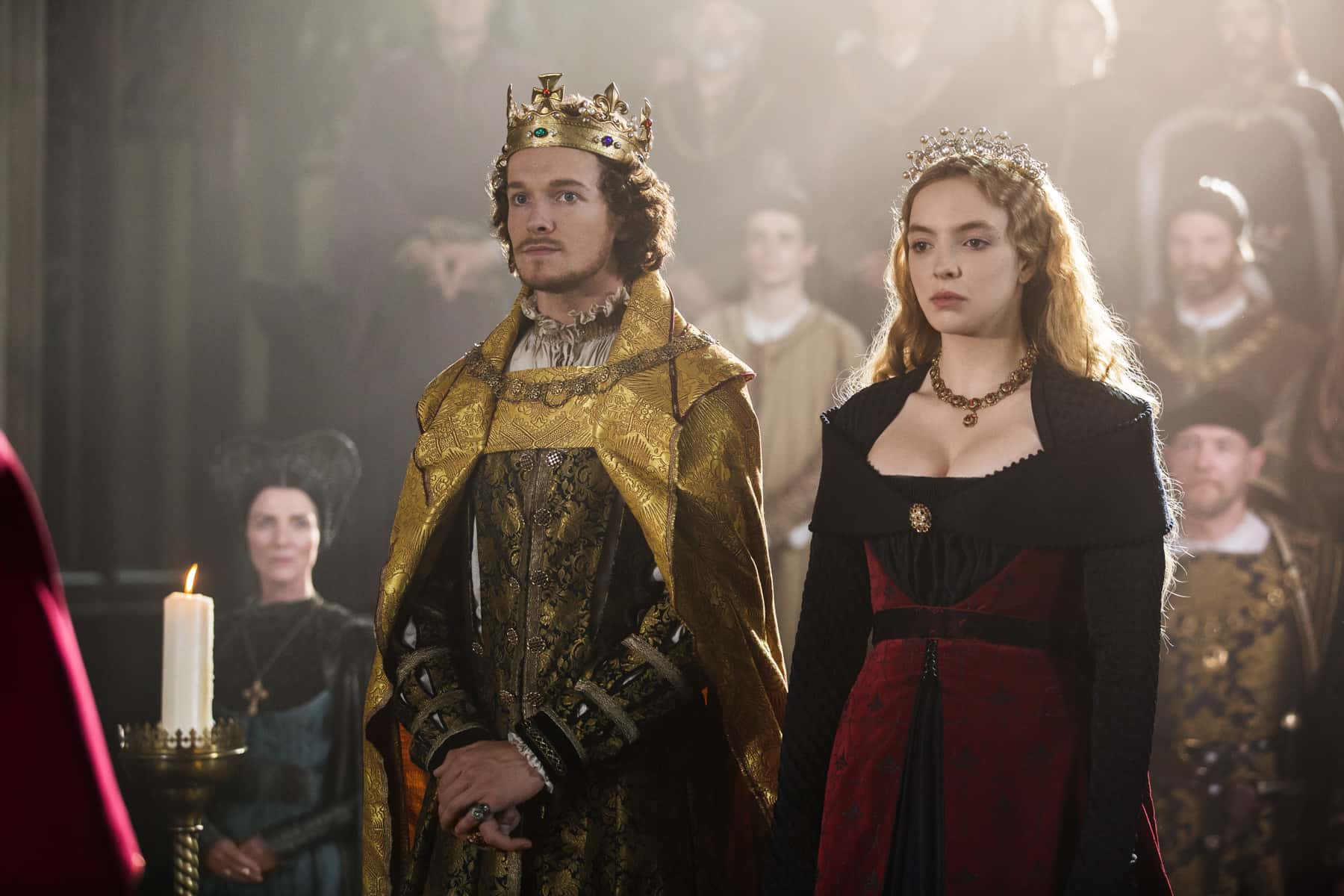 fanpop
fanpop
6. He Shoots, She Scores
Henry Tudor’s first rebellion against Richard III in 1483 actually went bust. Henry escaped and Margaret herself was placed under her husband's custody and deprived of her servants as punishment for her role in the conspiracy. Eventually, A lifetime of campaigning for her son paid off for Margaret.
In August 1485, Henry Tudor finally defeated Richard III at the Battle of Bosworth.
7. Throwback Thursdays: Civil War
In the 1490s, Henry VII went to war with a ghost... kind of: a man named Perkin Warbeck claimed to be the long-lost Richard of Shrewsbury, one of the lost “Princes in the Tower” and Henry's wife's brother. Backed by the King of Scotland, Warbeck launched multiple invasions of England and Ireland over several years.
Warwick was finally captured in 1497 and executed. Before his death, the man wrote that he was not a prince, but a Fleming pretender, so Henry could at least sleep while not feeling like he killed his brother-in-law.
8. Don’t Ask How We Got That Spare Room…
Shortly after his ascension, Henry imprisoned the ten-year-old nephew and heir to Richard III, Edward, the Earl of Warwick. However, he waited 14 years to finally execute the boy. At the time, it was believed the king was responding to pressure from the King and Queen of Spain, who wished for Henry to clean his house, so to speak, before they would send their daughter, Princess Catherine of Aragon, to marry Henry’s son, Prince Arthur.
Later in life, Catherine would believe her misfortunes were the karmic result of Edward’s sacrificial death.
 youtube
youtube
9. Public Doings
Catherine and Arthur’s wedding night was the only public royal bedding of the English in the 16th century. That makes it even more ironic that what happened after the couple was left alone was one of the biggest legal questions of the European 16th century…

Sign up to our newsletter.
History’s most fascinating stories and darkest secrets, delivered to your inbox daily. Making distraction rewarding since 2017.
10. Celebrity Deaths Come in Twos
The year of 1502 began a rough spell for Henry VII. First, his son and heir, Prince Arthur, died suddenly after only a few months of marriage to Catherine of Aragon. Then, Henry’s wife, Elizabeth of York, died in childbirth just one year later. He shut himself away for several days, refusing to speak to anyone but his mother.
 clipartxtras
clipartxtras
11. Nothing like Recycling
After the death of his son Prince Arthur, King Henry salvaged the Spanish alliance by getting a Papal dispensation to engage his widowed daughter-in-law, Catherine Aragon, to his surviving son, the future Henry VIII. After all, the old Henry still wanted to keep that huge dowry.
12. Trading for an Older Model?
What’s more awkward than marrying your dead son’s widow to your surviving son? Marrying your widowed daughter-in-law for yourself? That’s what Henry VII almost did after the death of Catherine of Aragon’s powerful mother, Isabella of Castile. This downgraded Catherine in the marriage market, so King Henry had second thoughts and changed the papal dispensation to allow marriage between Catherine and himself.
13. The Future Henry VIII vs. Bad Infrastructure
In July 1506, Prince Henry was almost killed on a late-night father-son walk. The gallery through which they were strolling “fell suddenly” and nearly crushed the king’s last living son—an accident which could have destroyed the Tudor dynasty itself. No one was hurt, but a carpenter was promptly imprisoned for his negligence.
14. No Rest for the Resilient
Margaret Beaufort famously outlived her only son, Henry VII, who died on April 21, 1509. Even on her son’s grave, Margaret took on the reins of responsibility: she planned not only her son’s funeral, but also the coronation of her grandson Henry VIII.
15. The Life of the Party for Now
The last family events that Margaret Beaufort witnessed in her eventful life were the wedding of her grandson Henry VIII to Catherine of Aragon and the couple’s joint coronation. Margaret herself died just two months after her beloved son, at the ripe age of about 68.
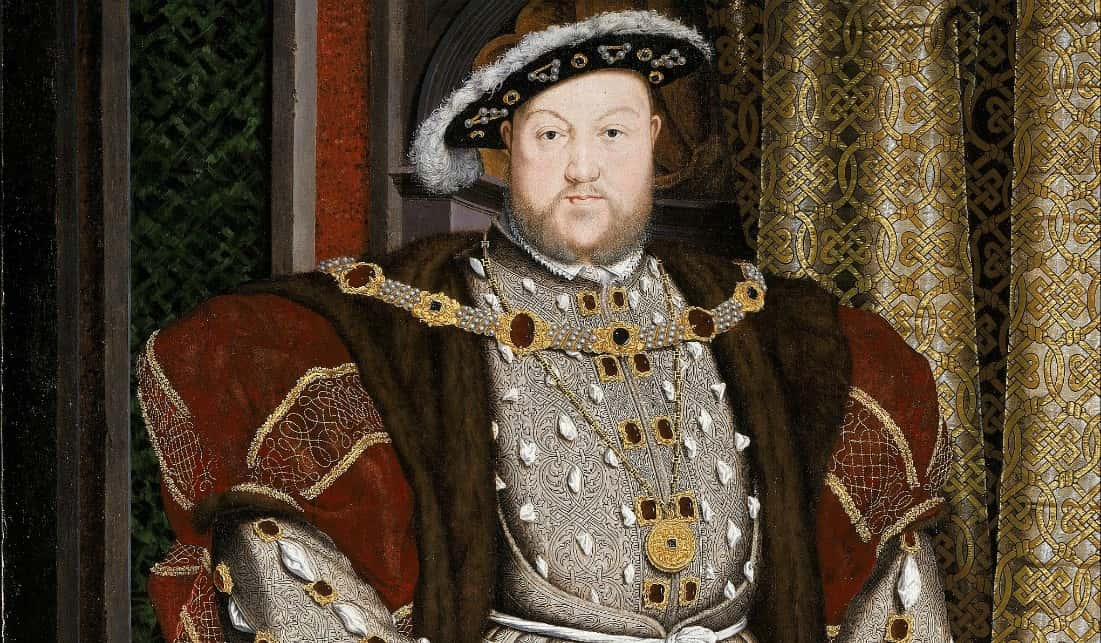 Wikipedia
Wikipedia
16. Flat as a Pancake
One of Henry VIII’s more gruesome ways of executing people was a method called "pressing," which essentially is crushing someone to death. A large plank was held over the body of the prisoner, with weight being steadily added until they could no longer breathe. This was a long and drawn out way of killing someone, and weights were added slowly to ensure maximum suffering.
17. Small World
It may seem like Henry VIII searched far and wide for a suitable wife, seeing as he married six different women, but he didn’t look as far as you might think: Henry and each of his wives were all descended from King Edward I, meaning that they were all cousins to one degree or another.
 Shutterstock
Shutterstock
18. Phantom Fetus
Catherine of Aragon had a child who “disappeared.” Kind of. In January 1510, she suffered her first of many miscarriages. However, her stomach remained puffy, probably from infection, which caused her doctors to believe that she had been carrying twins and one had survived, even as Catherine continued to menstruate—prenatal care was…experimental in 1510.
Two months later, Catherine went into seclusion for the birth. But of course, no child arrived.
19. My Bloody Valentine
In 1513, a heavily pregnant Catherine of Aragon rode in full armor to address troops at the Battle of Flodden. Henry was away at a foreign war, leaving Catherine as regent. The Scottish army, led by Henry’s brother-in-law King James IV, took advantage of his absence and tried to attack the kingless nation. Catherine utterly destroyed the Scots and sent a bloody piece of James’s coat to Henry for use as a war banner.
She had wanted to send her hubby his brother-in-law’s body itself, but that was too much for those weak-bellied Englishmen—her words. Remember, this bloodshed was during their happy days!
20. He’s So Done With Her
In 1516, Queen Catherine of Aragon gave birth to Henry VIII’s first healthy child, Princess Mary. It ought to have been a happy occasion, but her failure to produce a boy was presenting problems for Henry VIII.
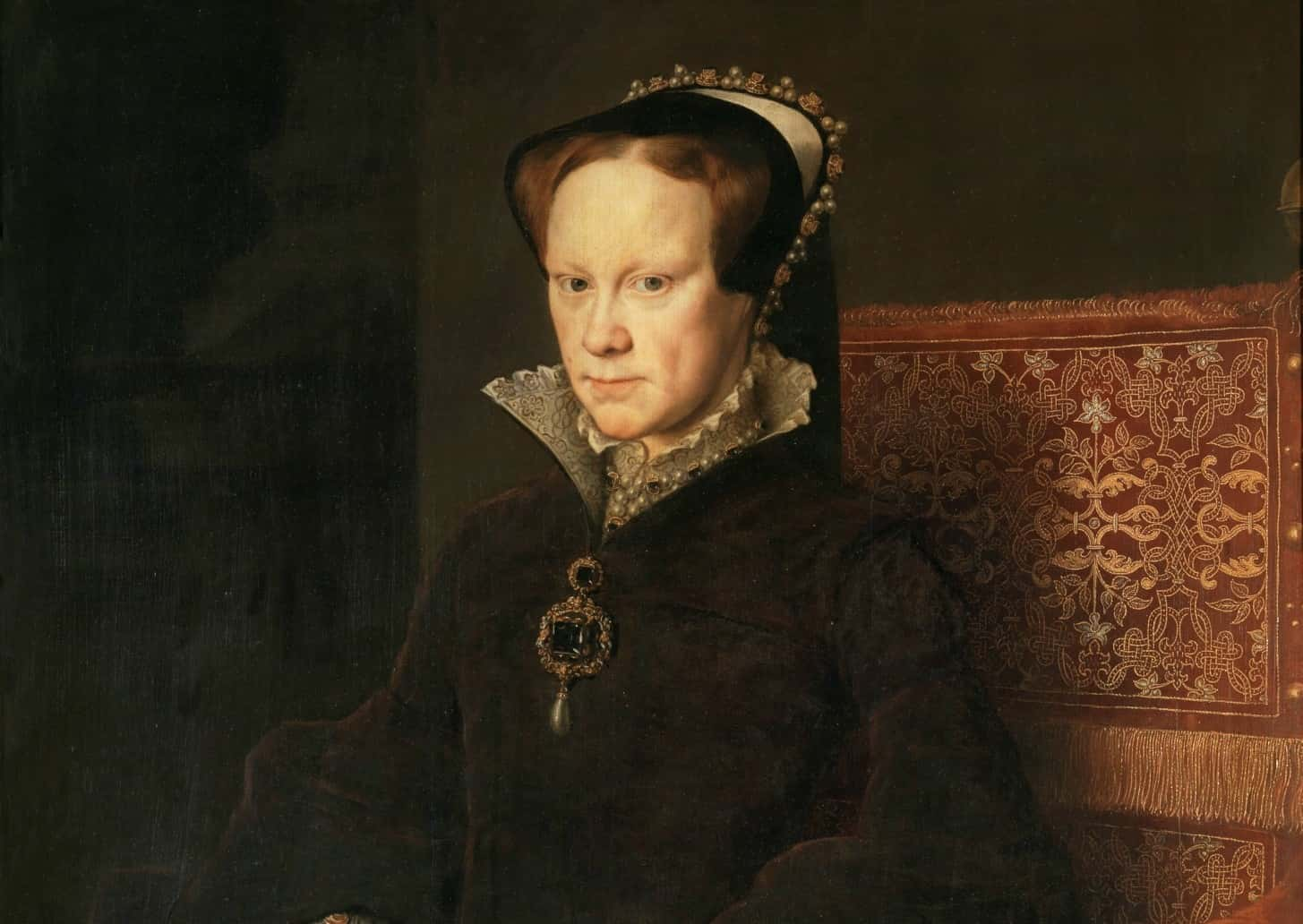 Wikipedia
Wikipedia
21. Obsession
Henry VIII was consumed by his desire to father a son—something that proved famously difficult for him. Catherine of Aragon bore Henry six children, including two sons, but all but one of those children—the future Queen Mary—died in infancy. Henry VIII was desperate for a male heir to secure the royal lineage, and Catherine's early "failure" to do so left Henry in a precarious position.
22. Woe Is Womb
Why did so many of Catherine of Aragon’s pregnancies fail? In recent years, some thinkers have put forth a theory that Catherine suffered from anorexia. During her young widowhood, uncertainty and poverty made Catherine frequently ill and depressed. This physical trauma may have led to future fertility problems.
Sounds like a stretch, but it’s worth noting yet another terrible thing that happened to Catherine of Aragon.
23. A Way Out
There is a passage in Leviticus which states that a man who marries his brother's wife will be childless. Henry, on the advice of religious councilors, began to suspect that this piece of biblical "wisdom" was responsible for he and Catherine's hitherto unsuccessful union. Awful as it seems today, in the eyes of Henry and his scholars, Princess Mary just didn't count.
So Henry began looking for a way out of the marriage. He petitioned the Pope for an annulment but was refused... laying the stage for what was to come.
24. Not the Momma
King Henry VIII’s interest in Anne Boleyn was controversial, and not just because he was already married. Henry was already having an affair with Anne’s older sister, Mary. There were also rumors that her mother Elizabeth Howard had also been bedded by the King. Despite public accusations claiming the affair, the King denied it, stating “never with the mother” when challenged.
While this seems to let Elizabeth off the hook, it also more-or-less confirms Henry's affair with Mary Boleyn.
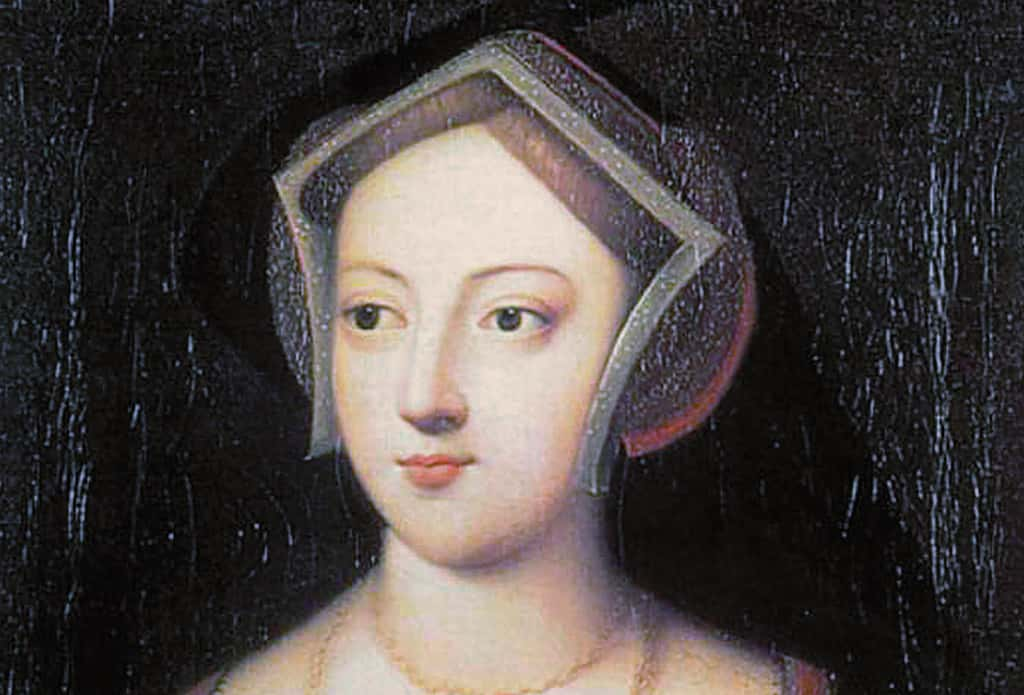 Wikimedia Commons
Wikimedia Commons
25. No Permission Needed
Deeply enamored with (and secretly married to) his mistress Anne Boleyn, who was now pregnant, Henry finally decided that he didn’t need the Pope’s permission when it came to the Church of England. In 1533, the new Archbishop of Canterbury presided over the trial that declared Henry's first marriage annulled, and his new marriage valid. Henry would then declare that he, not the pope, was the head of the Church of England, kicking off a little thing called the English Reformation.
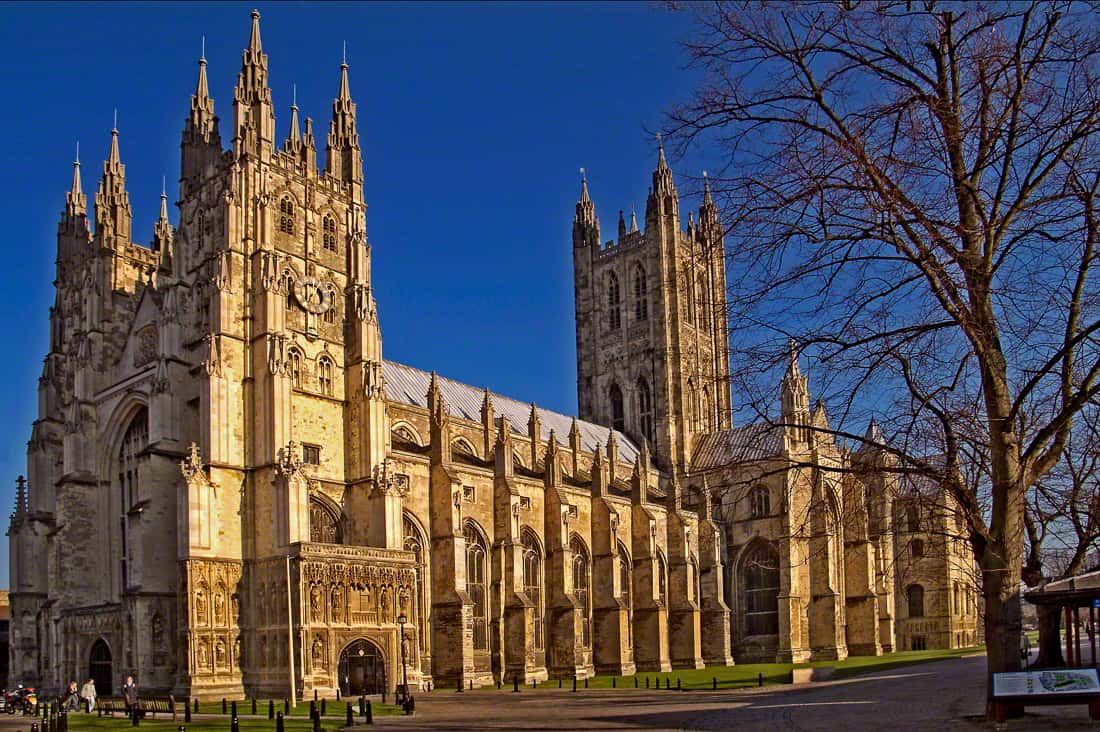 Wikimedia Commons
Wikimedia Commons
26. A House Divided
Henry’s treatment of Catherine of Aragon after the divorce caused a major rift between Henry and his daughter, Mary. To help curb Mary’s resentment, Henry forbid the mother and daughter from communicating, but sympathetic servants secretly carried letters back and forth between them.
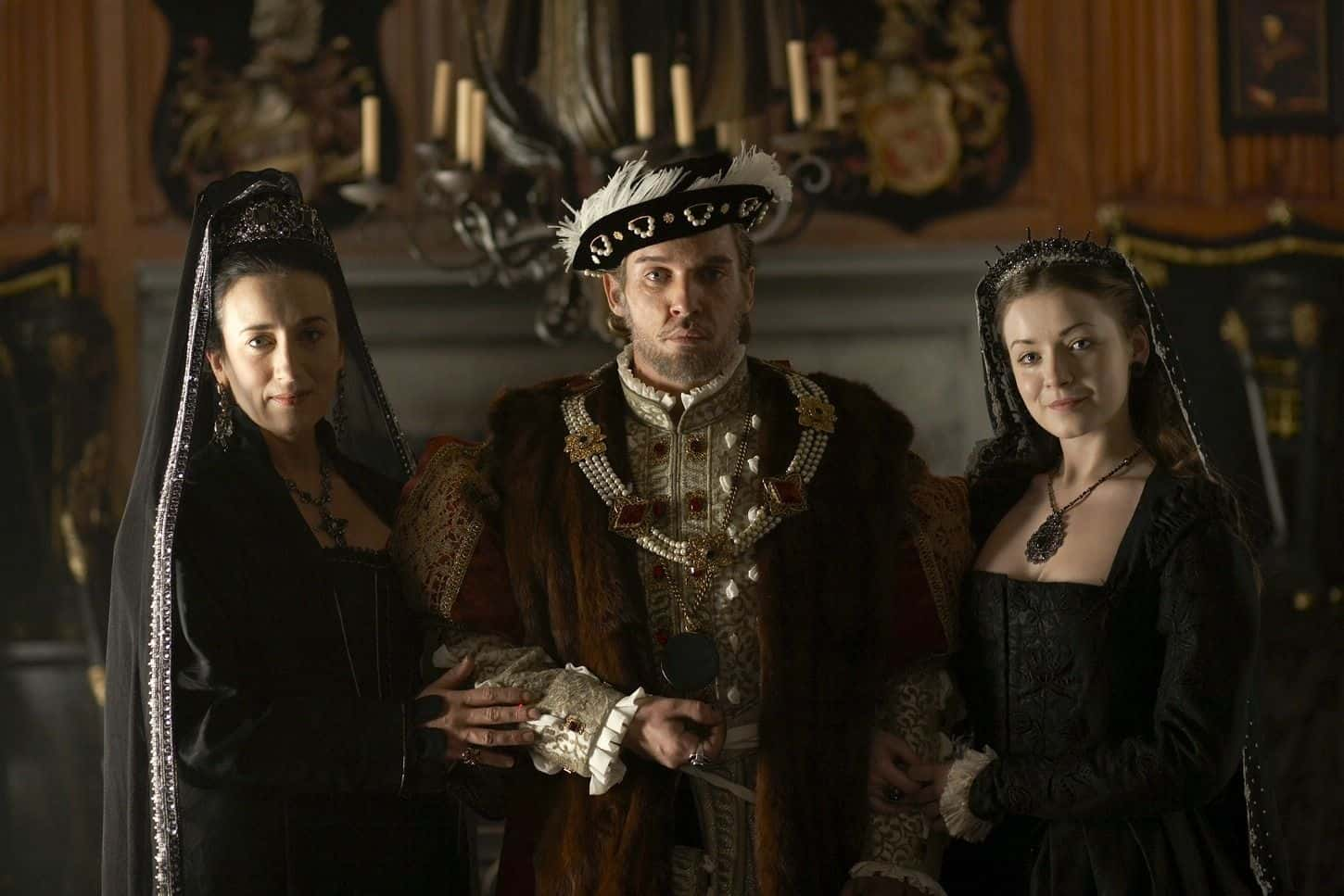 pinterest
pinterest
27. Begging to Get In
Catherine spent her final days as the image of Catholic piety. Though she had access to all of Kimbleton Castle, she remained in a single room, fasting and praying. Though she once said “I would rather be a poor beggar’s wife and be sure of Heaven than queen of all the world,” for the rest of her life, she continued to refer to herself as the Queen of England. In all, Catherine of Aragon remained married to Henry VIII for 24 years.
Their marriage lasted longer than all of Henry’s other marriages combined.
28. Head on a Spike
In 1532, Elizabeth Barton, a Catholic nun known as “The Nun of Kent” and “The Holy Maid of London,” began prophesying that Henry VIII's marriage to Anne Boleyn would result in his death. In 1533, she was arrested and forced to admit that she’d made everything up. She was executed for treason and hanged. Her head was placed on a spike on London Bridge; she was the only woman to ever be given that "honor."
29. First of Her Name
The child Anne Boleyn was carrying would become Queen Elizabeth I, who would later become one of England's most famous monarchs in her own right.
30. Close, but No Cigar
Prior to Elizabeth’s birth, both Henry and Anne were so certain of a male child—an astrologer had all but promised it—that the royal announcement had to be quickly, and sloppily, amended to read “princess” instead of “prince.” The customary joust, planned for the day of a male heir’s birth, had to be canceled at the last minute.
 screenertv
screenertv
31. No Love Lost
Anne Boleyn showed no lack of disdain for her predecessor, Catherine of Aragon. She refused to attend Catherine’s funeral, prevented Catherine’s daughter Mary from attending, and spent the day parading around the castle in bright yellow. Rumors spread that Anne had threatened to murder Catherine and Mary, and Catherine’s death led many to suggest that Anne had finally made good on her threat.
32. Goodbye and Yellow!
According the Imperial Ambassador Eustace Chapuys, Henry “honored” the death of his ex-wife, to whom he was married for over 20 years, by dressing head-to-toe in yellow silks and declaring, “God be praised that we are free from all suspicion of war!” since the divorce had put him at odds with her nephew, Emperor Charles of Spain.
Some people have tried to suggest that yellow is the Spanish color for mourning, but the verdict is still up in the air.
33. Ghost Girl
The ghost of Catherine of Aragon is said to haunt Castle Lodge, Ludlow, where the young bride stayed in her first, brief marriage to Arthur, Prince of Wales. Visitors report seeing an apparition of a teenaged girl in Tudor-era clothing. She floats through both the halls and the nursery that she never got to fill, perhaps longing for more hopeful times.
34. Mock Trial
No fewer than seven men were accused of carrying out affairs with Anne Boleyn, among them the poet Sir Thomas Wyatt, Henry’s friend Henry Norris, and Anne’s own brother, George. Virtually all denied the allegations or confessed under torture. Those coerced confessions were enough to have Anne condemned to death for adultery, treason, and incest. Modern historians agree that the charges brought against Anne Boleyn that led to her execution were false and unconvincing and that Henry had her killed just because she didn’t happen to have any male children.
35. High Spirits
Anne Boleyn was beheaded on May 19, 1536. She went to the block with surprisingly high spirits, cracking jokes about the length of her neck and referring to herself as “Lady Anne Lack-Head.” When Anne was brought to the scaffold to die, she begged leave to address the crown and was granted the right to do so. Despite the limited evidence against her, she said,
“Good Christian people, I am come hither to die, for according to the law, and by the law, I am judged to die, and therefore I will speak nothing against it. I am come hither to accuse no man, nor to speak anything of that, whereof I am accused and condemned to die, but I pray God save the king and send him long to reign over you, for a gentler nor a more merciful prince was there never: and to me he was ever a good, a gentle and sovereign lord. And if any person will meddle of my cause, I require them to judge the best. And thus I take my leave of the world and of you all, and I heartily desire you all to pray for me. O Lord have mercy on me, to God I commend my soul.”
As she awaited the executioner’s blade, kneeling on the block, she repeated the phrase, “To Jesus Christ, I commend my soul; Lord Jesu receive my soul.”
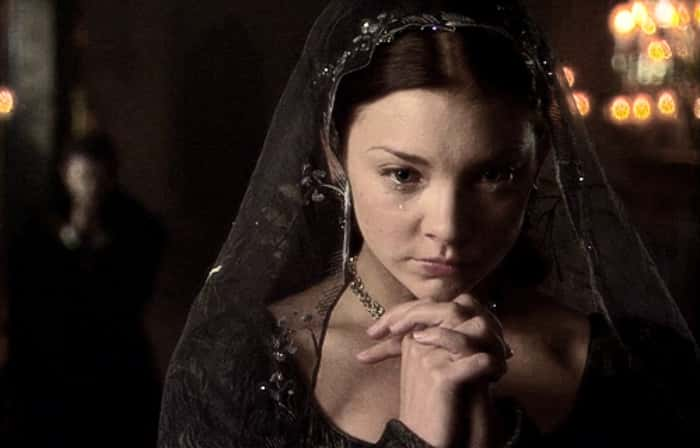 tumblr
tumblr
36. Is it Her?
Despite the careful planning that went into Anne Boleyn’s execution, little to no thought was given to what should be done with her remains afterward. Not having arranged for a coffin, her remains were allegedly put into an old arrow chest, and she and her brother were buried in an unmarked grave in front of the altar at the Church of St. Peter ad Vincula. In an interesting twist, it turned out that five other beheaded women had been buried under the altar, and it had simply been assumed that the bones found in an arrow chest there were hers.
There is also a theory that her relatives had her body secretly reburied somewhere else, which based on that discovery, might have been true. Without DNA testing, the truth will probably never be known.
37. Frenemies
Henry VIII's next wife, Jane Seymour, was not only Anne Boleyn’s lady-in-waiting, but she was also Anne’s second cousin. The two women had been close friends at Henry’s court until Anne noticed the necklace Jane wore. The necklace featured a small portrait of Jane’s lover—Henry VIII. Anne angrily snatched the necklace from Jane’s hand, leading to what modern witnesses would probably describe as a “catfight.”
38. Third Time's the Charm?
King Henry was not a man to waste time. Within 24 hours of Anne Boleyn’s execution, Henry was already engaged to his mistress, Jane Seymour. Seymour eventually gave him his long-desired son, Edward VI, but she died two weeks after giving birth. She was the only of Henry’s six wives to be buried with him, and Henry considered her his first "true wife."
39. Which One?
King Henry VIII was a pretty heartless bugger, and as much as people have romanticized his great love for Jane, having a son and heir was always his number one priority. Jane’s labor was difficult, and when asked by a female attendant whether he wanted to save the mother or child if it came down to it, he supposedly replied “If you cannot save both, at least let the child live," followed by the characteristic statement "for other wives are easily found.” Priorities, right?
40. Renaissance Tinder
After Seymour's death from complications of after giving birth to Edward VI, Henry VIII began the search for his next wife. In order to choose, Henry was sent paintings of possible partners. He chose Anne of Cleves over her sister Amalia, but was unhappy with his choice when he finally saw her in person.
He called her a “fat, Flanders mare,” and had the marriage annulled after just six months. At least she kept her head!
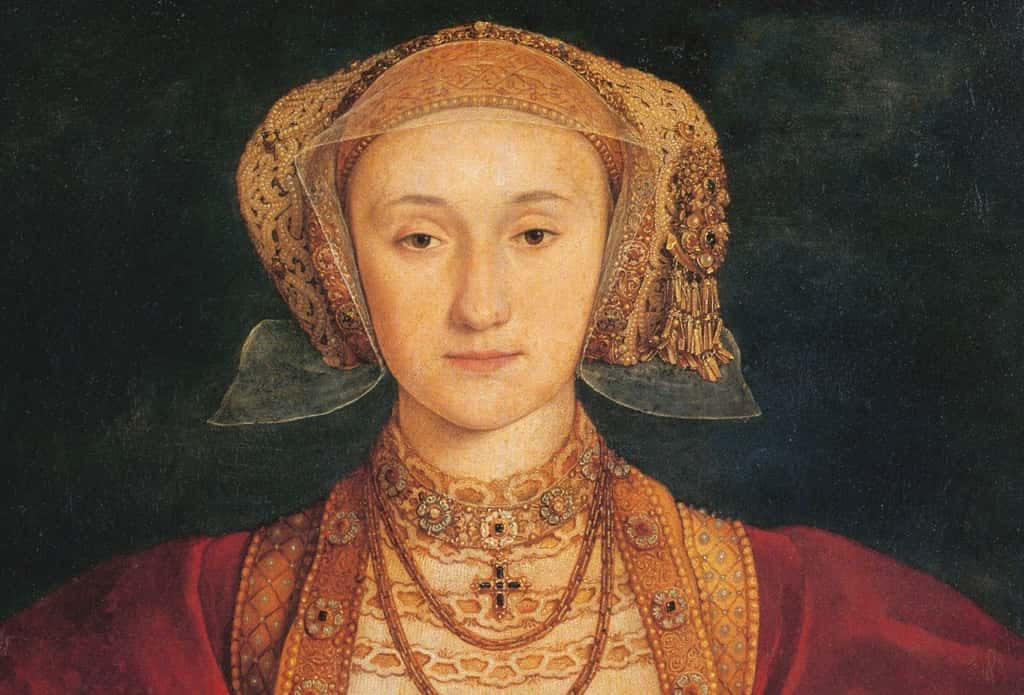 Wikimedia Commons
Wikimedia Commons
41. Off with Her Head!
Sixteen days after annulling his marriage to Anne of Cleves, Henry VIII (now 49) married the 19-year-old Catherine Howard, who had been Anne of Cleves' lady-in-waiting. Less than a year into their marriage, rumors of her infidelity began, and after gathering evidence of her promiscuity, Henry had her executed in 1542.
 Wikipedia
Wikipedia
42. Haunting Screams
Allegedly, Catherine Howard did not take the news that she’d arrested for adultery and treason well. The 19-year-old Queen is said to have broken free from her guards at Hampton Court and run through what’s now known as the Haunted Gallery, screaming for Henry to show her mercy. She never made it to him, however—in fact, she would never see the king again.
According to legend, her ghost remains in the Haunted Gallery to this day, and people have often claimed to have heard her screams for mercy.
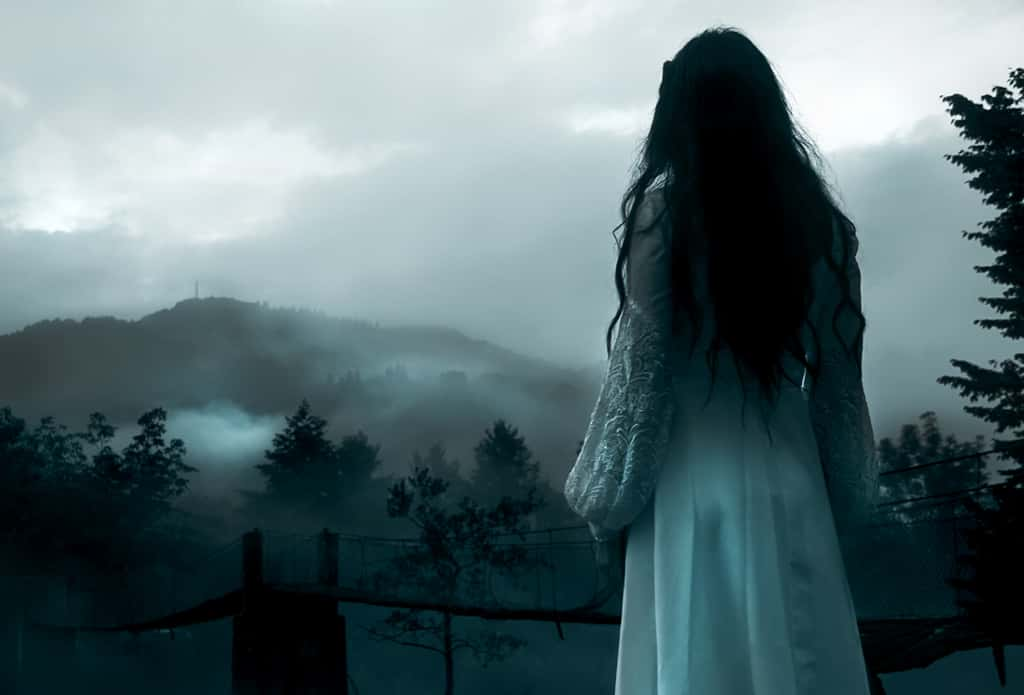 Shutterstock
Shutterstock
43. Weren't Six Wives Enough?
Henry VIII had at least ten mistresses over the course of his six marriages, beginning approximately a year after his marriage to Catherine of Aragon. It's a truly fascinating phenomenon because while a little bit of extramarital activity was not exactly new behavior for a monarch, such brazen and unapologetic philandering absolutely was.
And yet, when others attempted to corral Henry's increasingly wild libido, he simply found a way to brush them off. Just think of it: the man changed the entire country's relationship with the state religion—just to accommodate his lust. That'd be like an American president altering the constitution in order to justify his execution of the First Lady. Crazy stuff.
44. Groom of the Stool
Some of the most important of Henry VIII’s attendants were his bathroom attendants. These men got the title “the Groom of the Stool,” and they helped dress and undress the king before and after going to the bathroom, and assisted with bodily functions and washing. Not just mere servants, all of Henry VIII’s grooms were actually knights, and their intimate relationship with the king made them highly influential members of the court.
45. Outlived, Outlasted
Henry VIII’s sixth and final wife Catherine Parr managed to not only hang onto her head, she also outlived her husband. Catherine Parr also played a key role in restoring Mary and Elizabeth to the line of succession—after Henry had rendered them illegitimate by annulling his marriages to their mothers.
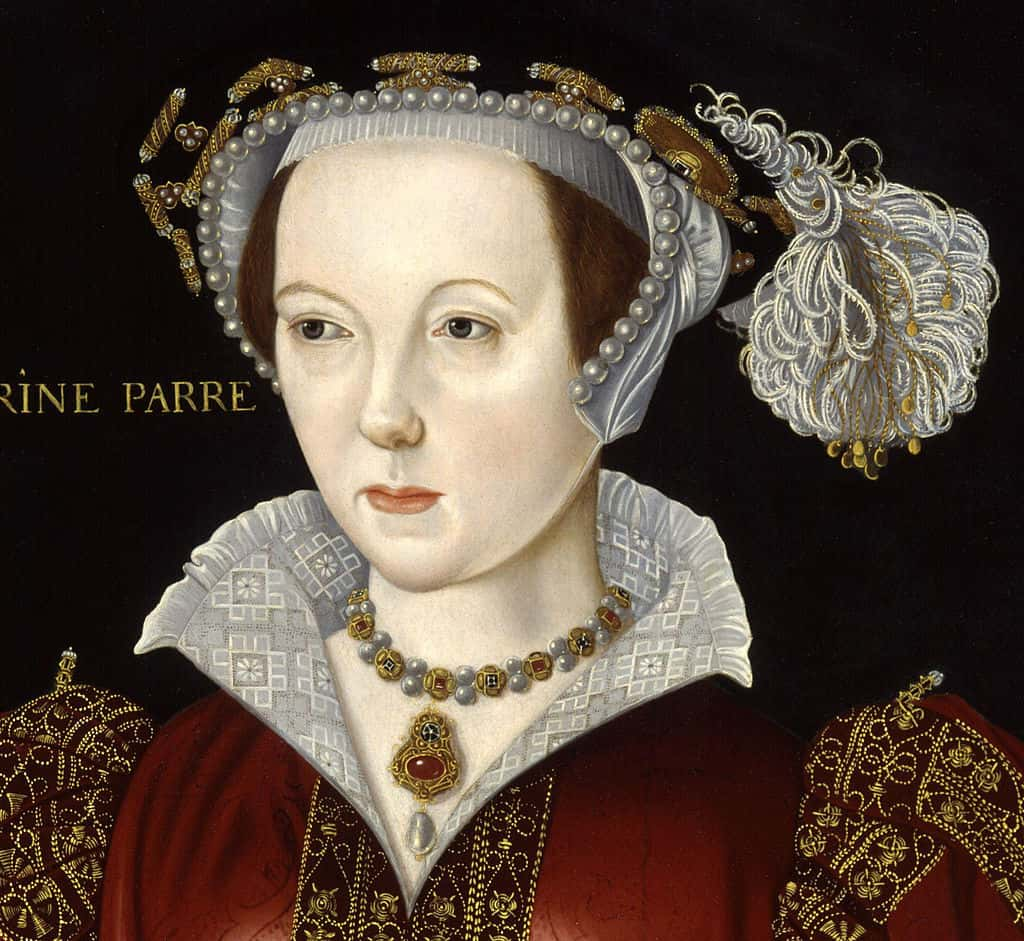 Wikipedia
Wikipedia
46. Wife Number Six
21 years Henry’s junior, Catherine Parr was actually named after Henry’s first wife, Catherine of Aragon, to whom Catherine’s mother had been a lady-in-waiting.
47. Maybe He Was a Fan of Tony Shalhoub?
Despite being known for his vigor and athleticism as a young man, Henry’s massive weight gain and the subsequent decline of his health finally caught up to him, and he died in 1547 at the age of 55. His final words are not known for sure, but it has long been rumored that he cryptically cried “Monks! Monks! Monks!” before his final breath left him.
 Shutterstock
Shutterstock
48. Worst Monarch in History
England has had some terrible monarchs in its time, but according to history writers, Henry VIII deserves the title of "worst monarch in history." Henry VIII took 20% of the vote for "worst monarch" in a survey by the Historical Writers Association, who polled 60 authors.
49. Burn Them All!
For several centuries, burning heretics alive was favored by the Church of England. For part of Henry’s reign, people who challenged the doctrine of the Roman Catholic Church were burnt at the stake. His daughter Mary, who was Catholic, continued the practice, burning 280 protestants at the stake. As a result, she earned the nickname "Bloody Mary."
50. The Golden Boy
Edward VI was not the “only” son of Henry VIII—he was just the only legitimate one to survive infancy. Edward’s lost brothers included Henry Fitzroy, the illegitimate son of Henry by his mistress, Bessie Blount; Fitzroy died at the age of 17 just one year before Edward was born. By his first queen, Henry also had one legitimate son, Prince Henry, born in 1511, who lived long enough to get an elaborate christening as the Duke of Cornwall.
Alas, this kid didn’t live past a few weeks, paving the way for Edward some 26 years later.
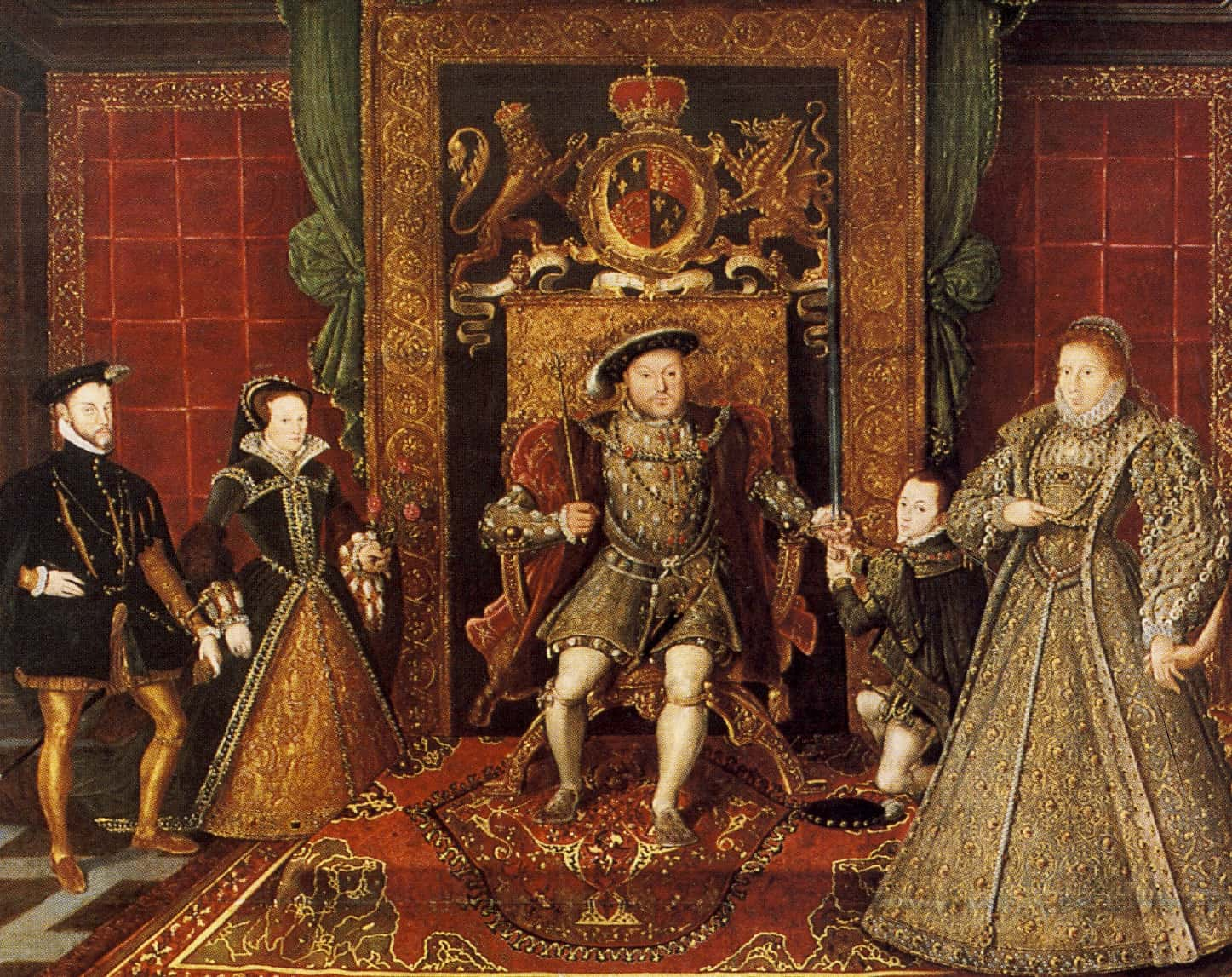 Wikimedia Commons
Wikimedia Commons
51. Medically Fit to Rule
For centuries, historians and Tudor fans couldn’t resist the apparent irony of Henry VIII’s longed-for son also being his sickliest child. However, the legend of Edward VI’s delicate health has been widely discredited. Contemporaries described him as tall and quick-growing.
While Edward did suffer from a serious fever at the age of four—and had somewhat bad eyesight—his private journals make no mention of long-term illness until the final six months of his life. More scandalously, some suggested Edward inherited syphilis in the womb from his father. This has been largely debunked.
52. My Sister, My Mother
Edward’s godmother was his own 21-year-old half-sister, Mary Tudor. Despite their church-bound duty to each other, Catholic Mary and Protestant Edward’s religious opinions would destabilize their later sibling relationship.
53. Mother From Another Marriage
Of his many stepmothers, Edward VI was closest to the last one: Catherine Parr. He once wrote to Parr, “I received so many benefits from you that my mind can hardly grasp them.” Parr is considered instrumental in bringing the much-fraught the royal family together.
54. Remember to Share
In 1543, Henry VIII restored Edward VI’s older half-sisters back into the line of succession. Mary I and Elizabeth I would follow their brother to his throne—but it was a decision that Edward would later discredit on his deathbed.
55. Mourning Buddies
Edward VI and his sister Elizabeth I were together when they were informed of their father’s death. The siblings apparently cried into each other’s arms when faced with their new life as true orphans. However, Edward’s journal would admit no hurt or personal reflection at the death.
 Getty Images
Getty Images
56. Part-Timer
Edward VI ascended when he was only nine years old. His father Henry VIII passed away in 1547, and Edward was officially crowned a month later. As if to highlight his age, the coronation was shorter than most, as people feared the long and boring procedures would be too taxing on their child-king.
57. The Penny-Pinching King
Edward VI has been compared to his grandfather, Henry VII. In contrast to drama king Henry VIII, both Edward VI and Henry VII preferred policies of economic austerity, much to the chagrin of a people who looked to the monarchy for pomp and pageantry.
58. Count on Us
Since he was a child, the vast majority of Edward VI’s ruling was done by his Council of Regency. These men were almost exclusively of the Protestant faction, and they awarded themselves massive land grants and titles to befit their new station. They were led by the new king’s uncle, Edward Seymour, Earl of Hertford, who elevated himself to the Duke of Somerset. Seymour was also entrusted as Lord Protector of the Realm and Governor of the King’s Person.
59. I’m the Cool Uncle
From early into his reign, Edward VI was caught in the middle of a power struggle between his two maternal uncles, Lord Protector Edward Seymour and his younger brother Lord Thomas Seymour. Thomas wanted a bigger share of power in the Council. Thus, he played the “fun uncle”; he smuggled gifts of money to the boy-king, making Uncle Ed look like the stick-in-a-mud and telling the boy how the Lord Protector was turning Edward into a “beggarly king.”
 Total War: Alternate Reality Wiki
Total War: Alternate Reality Wiki
60. Seal of Approval
Edward VI’s widowed stepmother Catherine Parr made a scandalous early marriage to the new king’s uncle, Thomas Seymour. However, Edward’s favor toward Catherine and Thomas let them get away with it. The king wrote a letter of approval about their marriage—though it was obviously dictated by Uncle Thomas for the little boy to write out.
 picpedia
picpedia
61. In the Doghouse
The Seymour power struggle for King Edward climaxed with attempted child abduction and dog murder. By 1548, it was openly known that Thomas was leveraging his position as Lord High Admiral to gain navy allies in case of rebellion against the king’s council. He did not show up to a hearing about his conduct. Instead, he showed up in the king’s bedroom at night to apparently kidnap the boy and control the monarchy. Unfortunately, all Thomas managed to do was shoot one of Edward’s precious dogs, thereby alerting the guards. Thomas was accordingly tried and executed for treason.

62. I Guess Blood Isn’t Thicker Than Water
Despite Edward’s early fondness for Thomas Seymour, the little king apparently showed no emotion as he signed his uncle’s death warrant. Can we blame him? The guy did shoot his dog.
63. Say Uncle
In October 1549, the Lord Protector Edward Seymour was overthrown by the rest of Edward VI’s regency council and later executed for felony in January 1552 on separate charges. Edward grieved little for his other disgraced uncle. His diary bluntly lists the charges against Seymour as “ambition, vainglory, entering into rash wars in mine youth, negligent looking on Newhaven, enriching himself of my treasure, following his own opinion, and doing all by his own authority, etc.,” and on the date of Seymour's beheading, Edward only recorded “the duke of Somerset had his head cut off upon Tower Hill between eight and nine o'clock in the morning.” Ice cold.
64. Sealed With a Bank Note
In 1551, Edward VI was betrothed to the French princess, Elisabeth of Valois (daughter of Henri II of France and Catherine de Medici). Peace with the French was financially necessary at this point; England was in dire economic straights and could no longer cover the cost of its wars.
65. Anyone But Her
By February 1553, Edward VI’s health was in critical condition. The teen was clearly not going to marry and father an heir anytime soon, but his heir was his Catholic half-sister, Mary Tudor. This would not do for the all-Protestant council. As a devout Protestant, Edward himself opposed Mary’s ascension.

66. Hello Darkness, My Old Friend
By the end of his life, Edward VI lost the ability to walk; the king’s legs were so swollen that he had to lie on his back all day. A realistic child to the end, Edward was ready to get it over with and told his tutor, “I am glad to die.” He passed away at Greenwich Palace on July 6, 1553—three months shy of his 16th birthday.
67. Girls Allowed Eventually
On his deathbed, Edward VI skipped over his sisters to give the throne to the male heirs of his relatives, the Greys. However, at this stage, there were no other living male Grey-Tudors to inherit his throne. Since sons take at least 9 months to make, and Edward wouldn’t live that long, he relented and allowed the Grey women to inherit the throne themselves.
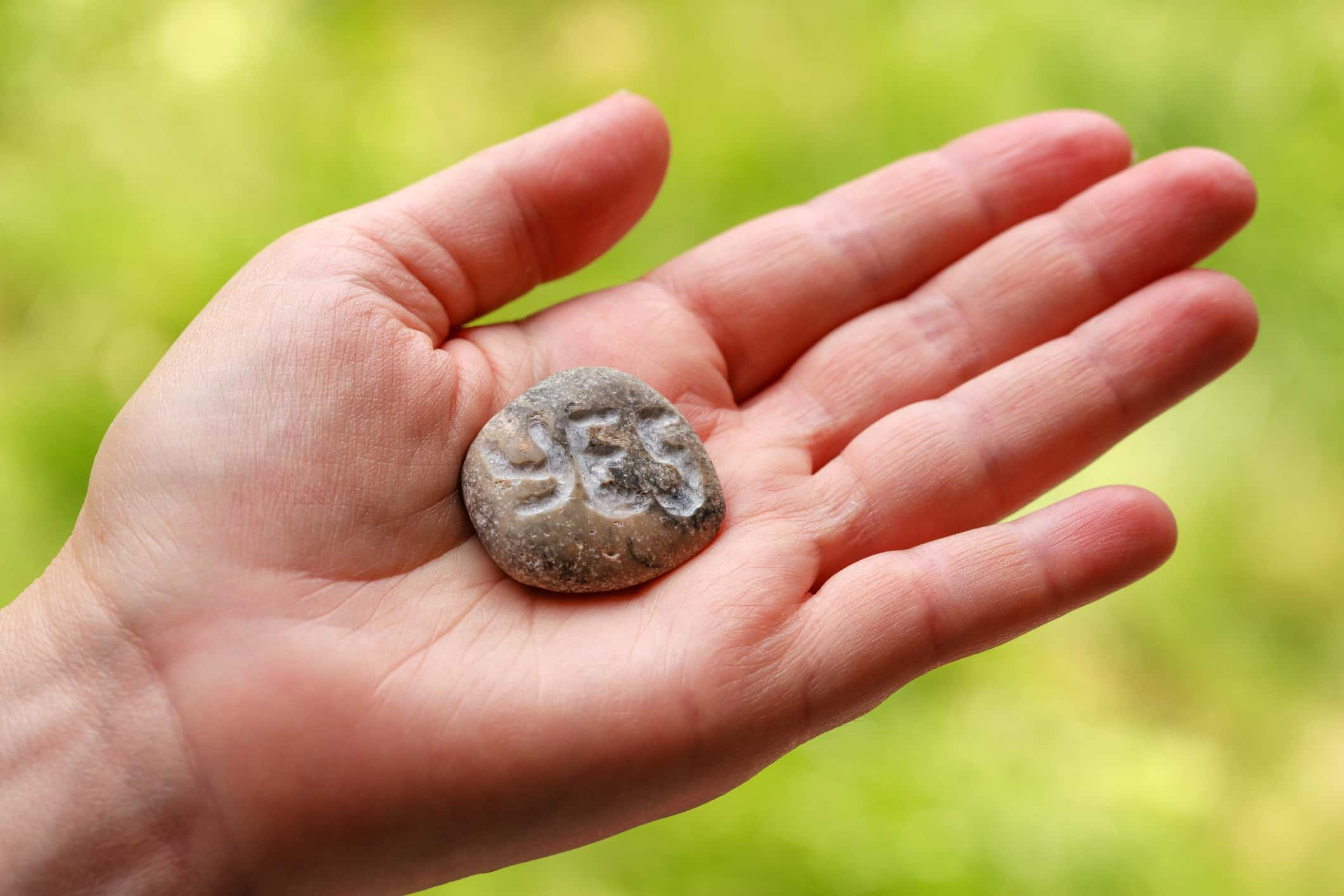
68. The 60-Second Successor
Edward VI’s dying request went bust, and Jane Grey was largely resisted as Queen of England. His sister Mary I waged her own forces to challenge Jane’s accession, which is why Jane is the “Nine Days Queen” instead of the “Long Lasting Queen So Spake Edward VI Who’s Too Dead To Do Anything About It Now.” For a time, Edward’s nightmare came true and England “enjoyed” a four-and-half-year return to Roman Catholicism under Mary I.
69. Tough Decisions
After Mary took the throne in 1553, she faced a difficult position when it came to Lady Jane and her husband, Guildford Dudley. Mary understood that Lady Jane was just a political pawn of the Dudleys, so although she was found guilty of treason, Mary initially kept her under guard at the Tower of London, not wanting to execute her.
However, just as everything seemed to be settling after the whole Steal-the-Throne debacle, further tensions within England about succession forced Mary to execute Lady Jane once and for all. She did so in quite some fashion: public beheading.
70. A Dubious Honor
Mary was given the nickname "Bloody Mary" because she was so quick to burn Protestants at the stake, her weapon of choice. She certainly used the stake as a means of punishment far more than those who came before and after her. Henry VIII burned 81 people, while Elizabeth I only doled out that particular punishment on five occasions.
As a reminder, Mary's record stood around an impressive 280 people.
 executedtoday
executedtoday
71. A Tithe of Troubles
Although she only reigned for five years, Mary was a busy Queen. As she attempted to reverse the Protestant reforms started by her father Henry VIII, Mary had over 280 dissenters of the Catholic Church burned at the stake in what was known as the Marian Persecutions.
When Mary was only a child, Henry used Protestantism to divorce Mary's mother. It's likely this only fueled Mary's staunch devotion to Catholicism.
 thissideofthetruth - WordPress
thissideofthetruth - WordPress
72. False Alarm
In the summer of 1554, the English court, and indeed most of Europe, was bracing for news of Mary I’s first child. Mary started to show signs of a pregnancy months earlier, and everyone was taking precautions for the next heir to the throne. Philip was possibly even planning to marry Mary’s half-sister Elizabeth in the event that his wife died in childbirth (he was a real stand-up guy).
The only problem? Mary wasn’t actually pregnant at all. Perhaps for psychological reasons, Mary had a rare case of false pregnancy, in which a woman shows many of the symptoms of a pregnancy without actually carrying a child.
73. Spreading Rumors
After it became clear to everyone that Mary was not, in fact, going to be giving birth to a child, the rumor mill went into overdrive. Across England, stories sprung up to explain the unusual events of Mary's "pregnancy." Some claimed she kept a miscarriage secret, others that the pregnancy was always fake and that Mary was going to smuggle in a baby to pose as her own.
Others suggested that Mary was actually ill and had convinced herself that she was not sick and just pregnant.
 BESTqUEST - WordPress
BESTqUEST - WordPress
74. You Can’t Fire Me, I Quit!
When Mary I instituted the Heresy Acts, which saw many prominent Protestants around England burned at the stake, it caused a huge drain from the kingdom. A number of intellectuals, such as the historian John Foxe, decided it was better to leave England altogether than face martyrdom at the stake. All told, about 800 Protestants chose exile from England and went to various spots across Europe.
 Alchetron
Alchetron
75. I Will Not Grant You Three Wishes
When she knew the end was coming, Mary drafted up her Will, which had three specific requests. The first was that the remaining debts of Henry VIII and Edward were paid. Secondly, new religious houses were to be created with the money she left. And finally, she requested that her mother’s body be exhumed and buried next to her. All three wishes were ignored after she died.
 thailawonline
thailawonline
76. All Men Must Die
Mary died, childless, in 1558 during an influenza epidemic. Just the year prior, she thought she might be pregnant once more; but as before, she merely had symptoms of a phantom pregnancy. She was 42 years old at her death.
77. Utmost Certainty
During one of her false pregnancies, Mary I herself was so convinced that she was with child that she had letters drafted announcing the birth of her heir, the next ruler of England. Sadly, the letters would never be needed.
78. Make Peace
Mary never much liked her half-sister Elizabeth. After all, Elizabeth’s mother Anne Boleyn had seduced Henry VIII away from Mary's mother Catherine of Aragon. The only reason why Mary accepted Elizabeth as heir to the throne was because her husband Philip convinced her it was the right decision. Mary, head-over-heels in love with Philip, reluctantly followed his advice.
79. Sister Act
Although Mary was eventually convinced by Philip to allow Elizabeth to be heir to the throne, things almost went a very different path. Mary’s resentment of and competition with Elizabeth caused her to imprison her little half-sister, and Mary even considered executing her, family member or not. Cooler heads eventually prevailed, and the rest is history.
80. Single and Ready to Mingle
Once Mary died, her widower Philip started trying to marry her sister Elizabeth, just as he had planned when he worried Mary might die in childbirth. As in his marriage to Mary, Philip was mostly interested in maintaining a strong Catholic alliance with England. Elizabeth was having none of it, however, and rejected the proposal.
 Rebel Circus
Rebel Circus
81. Cunning Like a Foxe
Even though Mary I was rather zealous when it came to persecuting Protestants in England, it still can't be said that she was more bloody than her father, Henry VIII. Henry executed somewhere between 57,000 and 72,000 people during his reign, and of course, ordered the execution of not one but two of his very own wives. So why is Mary I still referred to as "Bloody Mary"?
Part of the answer lies in the figure of John Foxe. An exiled but popular Protestant historian, Foxe wrote extensively on persecuted protestants, and his work, still in print, has kept this dark aspect of Mary's reign alive throughout the centuries.
82. Cause of Death
The reasons for Mary I’s death are not totally clear. Some accounts suggest she succumbed to the influenza outbreak that occurred in England in 1558. Others suggest she possibly died of cancer, and that her false pregnancy was actually the result of a tumor.
83. Nicknames
As mentioned, Elizabeth I, daughter of Henry VIII's second wife, Anne Boleyn, became her half-sister Mary's successor. Too many names? Well, Elizabeth herself was also known as the Virgin Queen, Gloriana, and, to her closest pals, Good Queen Bess; Bess was a common diminutive for Elizabeth at the time.
84. Broken Beginnings
After her mother Anne Boleyn was executed by her father, Henry VIII, and especially after her father died, Elizabeth had a very hard childhood. She was mistreated, considered illegitimate, and sexually abused while living as a ward with Catherine Parr, Henry VIII's widow. Parr's husband, Thomas Seymour (Elizabeth's former step-uncle) was said to have had an inappropriate relationship with the young girl, before Parr had her sent away.
Her Catholic half-sister, Queen Mary, also known as Bloody Mary for her brief and violent reign, also accused Elizabeth of participating in a rebellion plot. Mary had Elizabeth sent to the Tower of London and then to the Tower of Woodstock.
85. Long Run
After Queen Elizabeth II, who has reigned for over 65 years, and Queen Victoria, who reigned for 63, Elizabeth I is the third longest reigning British queen; she was in power for 44 years. Overall, she has the ninth longest run of the British monarchs.

86. Virgin Queen
Despite her long rein and eligibility, Elizabeth I never married. She entertained many suitors, including many foreign royals and other high ranking men in court, but, to her council's despair, she never married and never named an heir. According to her, she was married to England—and this wise move was probably what kept her in power for so long.
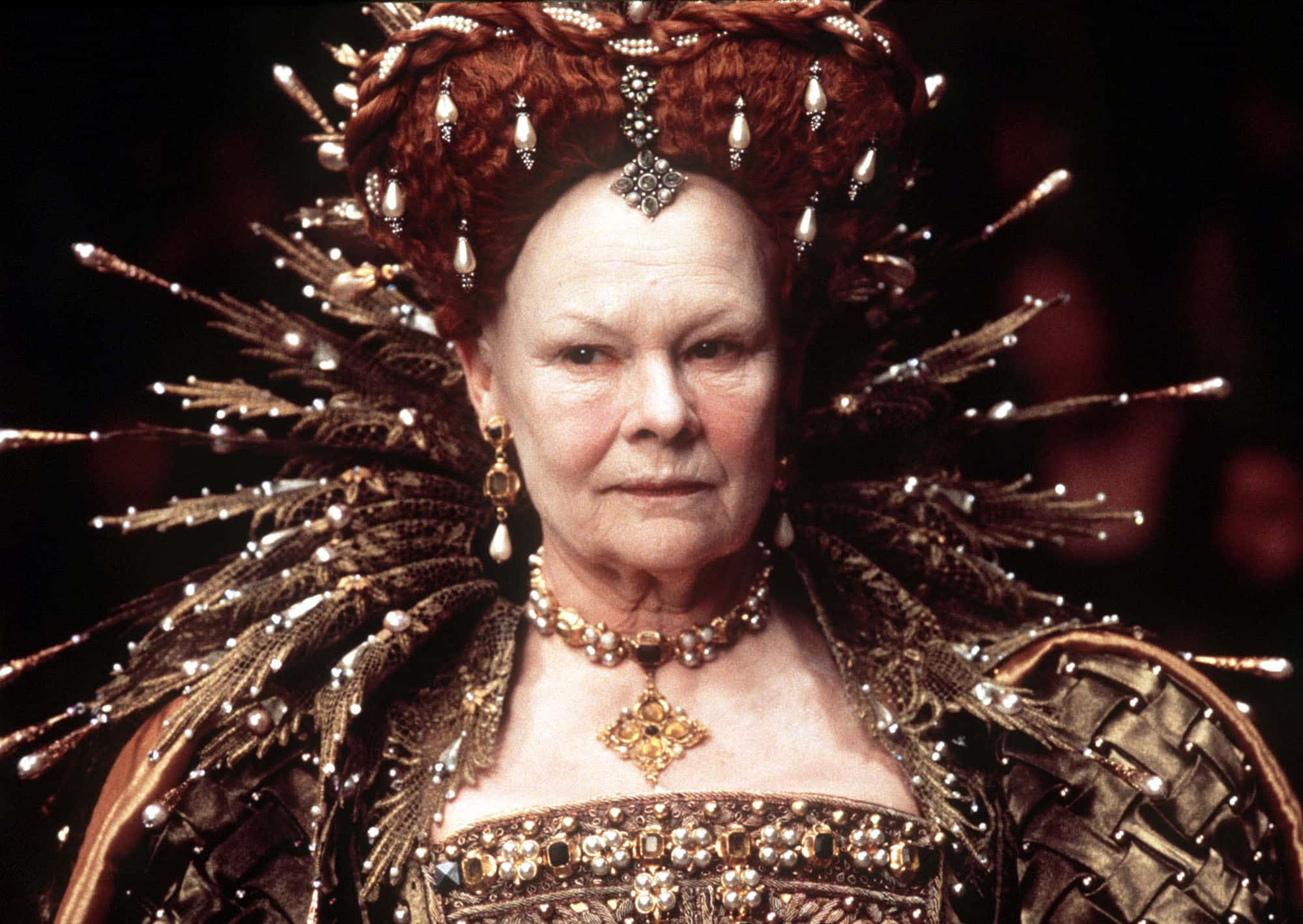 Getty Images
Getty Images
87. Family Tension
Throughout her reign, one of her main enemies was her first cousin once removed, Mary Queen of Scots. Elizabeth I imprisoned Mary when her actions turned against the English throne. Mary was in prison for 18 years before she was finally executed. Historically, there is some disagreement on whether Elizabeth officially sanctioned the execution; it was carried out quickly, and Elizabeth had been reluctant to sign and then dispatch the warrant.
The executioner begged for Mary's forgiveness before killing her, which she said she granted with all of her heart. Before the ax severed her head from her shoulders, Mary's final words were: "Into thy hands, O Lord, I commend my spirit." Interestingly, during their long and tumultuous relationship, Elizabeth I and Mary, Queen of Scots never actually met in person.
88. It's All Looks
Elizabeth I was careful to present her best self. This meant wearing heavy makeup made of lead and vinegar, which probably did more damage to her smallpox-scarred skin than it helped it. She also used beeswax and kohl in her beauty regime, substances that are still commonly used today.
89. Tough Boss
Although generous with her servants, Elizabeth I expected total loyalty and was quick to fly into a rage. During one outburst, she broke her maid's finger with a hairbrush—and then told everyone it was an accident involving a fallen candlestick.
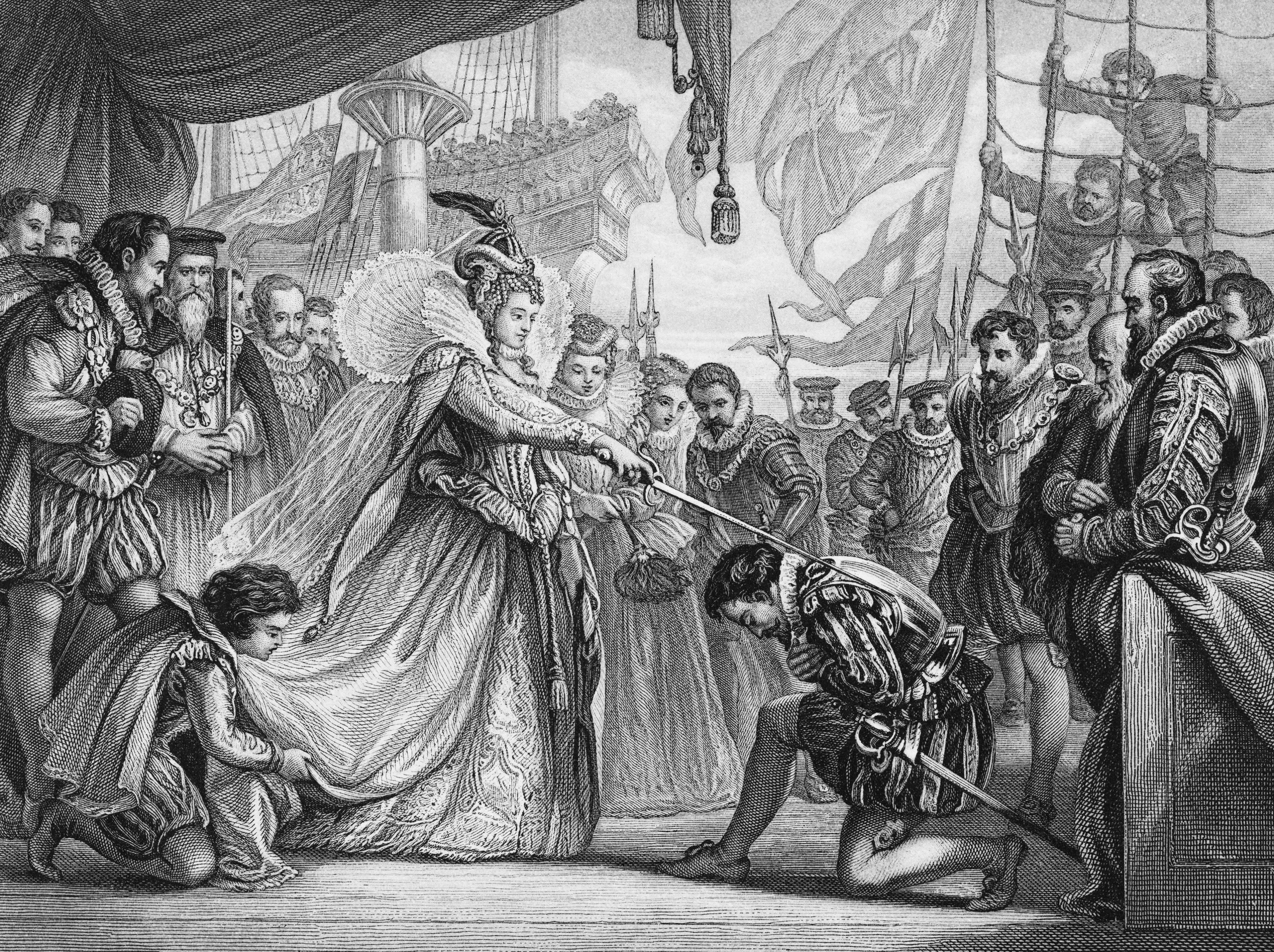 Getty Images
Getty Images
90. The Bisley Boy
At some point in the 19th century, a rumor was started that Elizabeth I had died as a child, and was replaced with a red-headed boy of the same age by the governess in charge of her. He is referred to as the Bisley boy. The governess feared that Henry VIII would sentence her to be executed if he learned of his daughter's death, so she sought out a replacement.
The legend goes that Henry VIII was fooled, and the governess later realized that even if she fled the country, Henry VIII would have her family killed. Furthermore, the Bisley Boy and all of his accomplices had now conspired against the king. Unable to replace the replacement, the Bisley Boy had no choice but to double down and lie for life.
Most historians dismiss this theory as hogwash—nothing more than the product of male historians of the 19th century trying to explain why Elizabeth I never married or bore children.
 Pinterest
Pinterest
91. Occult Powers
Elizabeth I covered all her bases when it came to keeping power, which meant including the astronomer-magician John Dee among her chief advisers. Dee advised Elizabeth I on choosing important dates as well as voyages of discovery, and supposedly removed a death curse from her. Dee was thought to be a former owner of the infamous encrypted Voynich manuscript.
92. Body Politic
After a lifetime of an entire country (and even continent) obsessing over her body and its functions, Elizabeth I left instructions to leave her body intact after death, breaking with the royal tradition of embalming. This was rumored to have been in order to guard her secrets (it was thought that the process could reveal if a woman had borne children). Her ever loyal ladies-in-waiting made sure to protect her wishes even after death.
93. The End of the Line
Since Elizabeth I had no heir, the House of Tudor, which began in 1485 with Henry VII, ended with her death in 1603.
 Getty Images
Getty Images
94. Who’s Your Daddy?
While Henry VII may have never strayed from his wife, he might have fathered an illegitimate child from before they met. A child named Roland de Velville landed with the 28-year-old Henry VII as the king claimed England. The boy was favored at the hard-to-please king’s court for the rest of his life, which led many historians to believe Roland was Henry VII’s secret lovechild from a youthful affair. Until we can time-travel Maury Povich to 14th century Brittany, no one can be sure.
95. Too Many Questions
After her illicit and dangerous affair with King Henry VIII, Mary Boleyn fell deeply in love with Will Stafford, a soldier from a poor noble family. Tragically, their union was doomed to a heartbreaking end. He wasn’t rich or prestigious enough to openly be with Mary, so the two eloped. When Mary became pregnant by William, the King discovered their secret and flew into a rage—but her nightmare was just beginning.
Mary was shunned by not just the king but also her father, uncle, and brother. It was only her sister, Queen Anne, who showed some sympathy and sent Mary a golden cup and some money to alleviate her financial problems. However, Anne still refused to see Mary in person. It’s most likely the sisters never saw each other again.
 The Other Boleyn Girl, Focus Features
The Other Boleyn Girl, Focus Features
96. Heart of Darkness
For its time, Catherine of Aragon’s cause of death was ambiguous. Her embalmer noticed the corpse was in perfect health—save for her heart, which had turned black. That led some people to whisper about poison. Today, historians agree generally agree that Catherine died of heart cancer, which—considering the circumstances of her life—appears too poetic to be true.
97. Blaze It
The inscription above the grave of Jane Seymour, the future King Edward VI’s mother, laments her death, but it also celebrates her sacrifice to give Henry VIII his heir: “Here lieth a Phoenix, by whose death / Another Phoenix life gave breath: / It is to be lamented much / The world at once ne’er knew two such.”
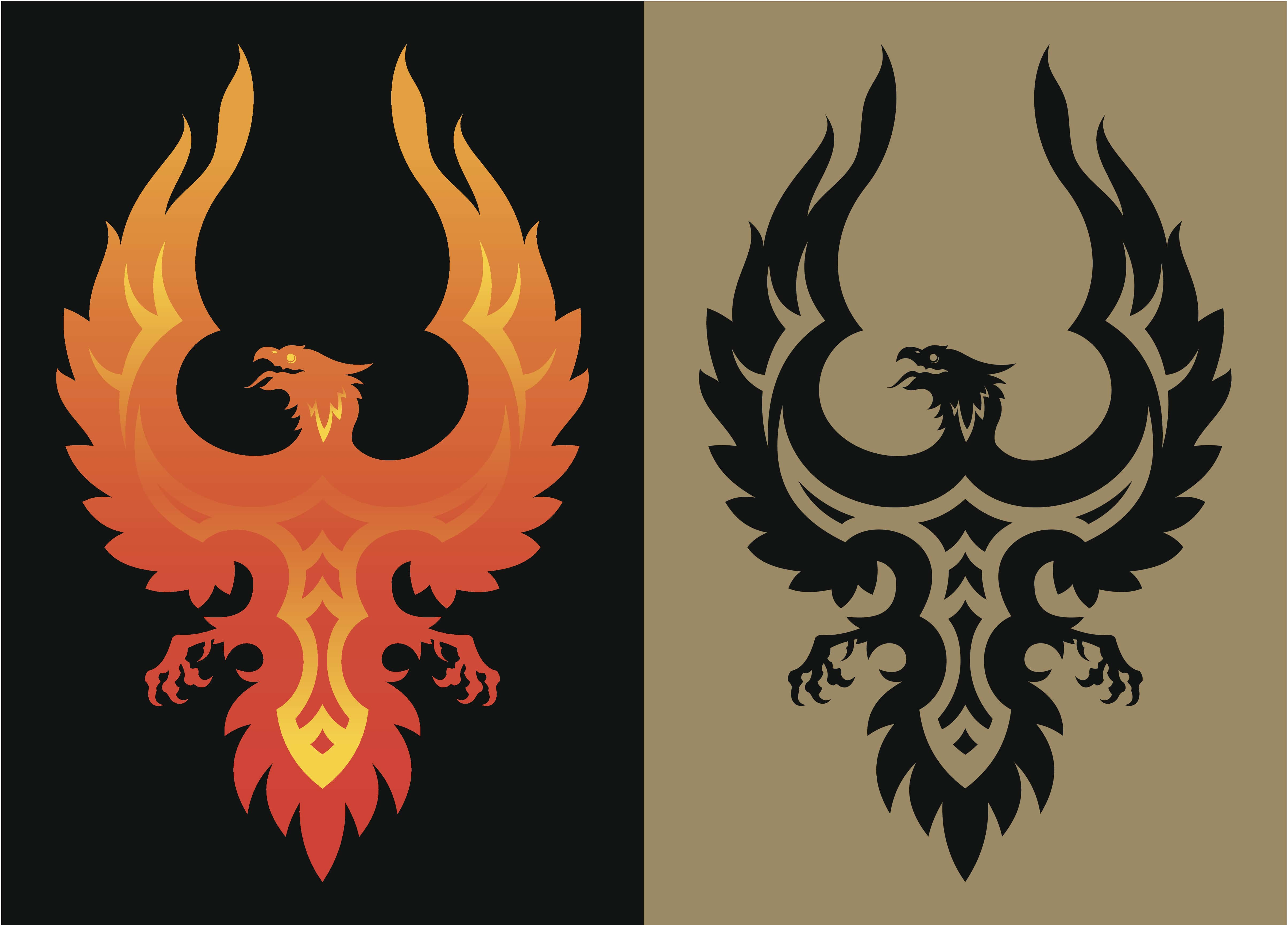
98. This Was a Test, And You Failed
Anne of Cleves was famously discarded by the King, but there may be another side to the story. Anne’s first meeting with Henry was a diplomatic blunder: making her way to London, Anne’s party stopped on New Year’s Day 1540 at Rochester, where she took time to look at bull-baiting from the window. Suddenly, an old burly stranger entered the room.
Depending on the account, either this unkempt figure tried to get her attention and was politely ignored by Anne, or he outright tried to kiss and grope her, which understandably caused the young woman to ring the alarms. Unfortunately, the stranger was really Henry VIII in disguise. He had expected Anne to know her “role”—the maiden who could see through her chivalric suitor’s disguise via the power of “true love”…or something. Anne was unimpressed, so, in emotional self-defense, Henry may have decided to be unimpressed with her.
99. History is One Long Game of Telephone
Despite what folklore—and shows like The Tudors—have to say about Catherine Howard's final words, there is no evidence that she ever said “I die a Queen, but I would rather have died the wife of Culpeper” (in reference to her lover, Thomas Culpeper) on the scaffold. While it’s fun to imagine Catherine using her last moments to snub her scary husband Henry VIII, it’s a myth: she stuck to the traditional words about mercy and deserving “to die a thousand deaths” for betraying a king who always treated her so “graciously.” She was about 19 years old.
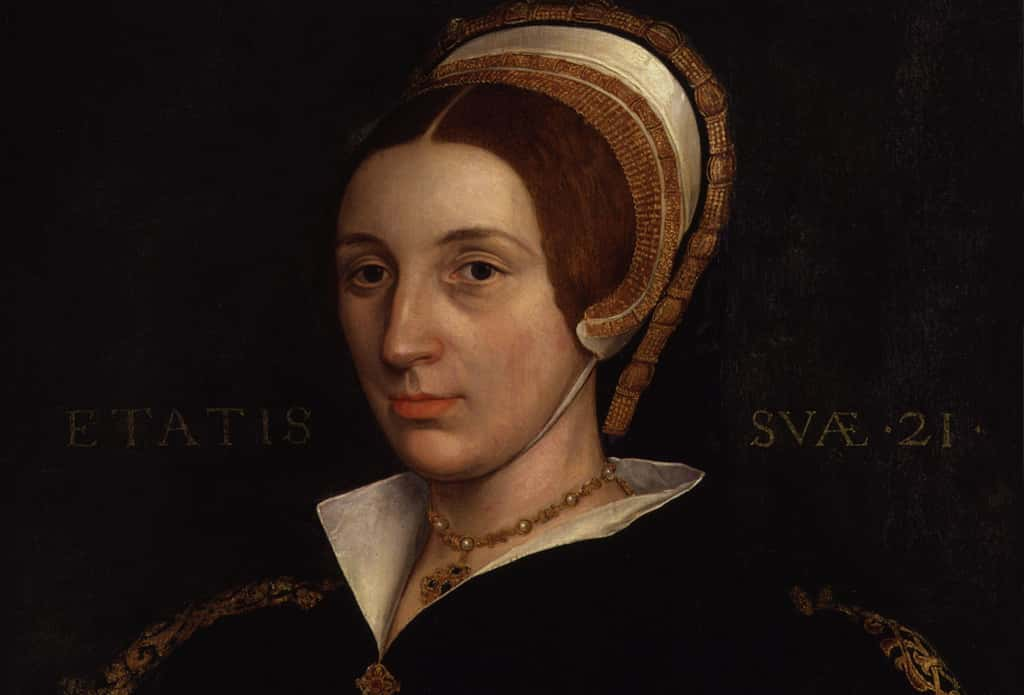 Wikimedia Commons
Wikimedia Commons
100. So They Had That In Common
Before marrying Henry VIII, Catherine Parr was married first to Sir Edwin Burgh and then to Sir Neville, 3rd Baron Latimer. After Henry’s death, Catherine married a fourth time, to Thomas Seymour, brother of Henry’s third wife, Jane Seymour. Catherine and Thomas remained married until she died.
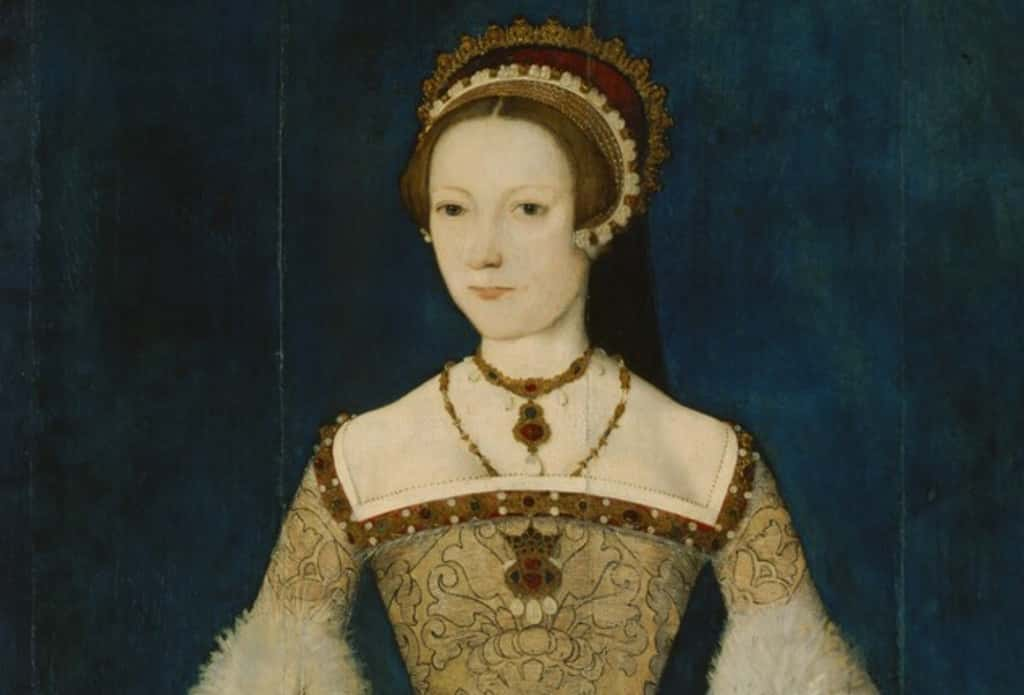 Wikimedia Commons
Wikimedia Commons
Sources: 1, 2, 3, 4, 5, 6, 7, 8, 9, 10, 11, 12, 13, 14, 15, 16, 17, 18, 19, 20, 21, 22, 23, 24, 25, 26, 27, 28, 29, 30, 31, 32, 33, 34, 35, 36, 37, 38, 39, 40, 41, 42, 43, 44, 45, 46, 47, 48, 49, 50, 51, 52, 53, 54, 55, 56, 57, 58, 59, 60, 61, 62, 63, 64, 65, 66, 67, 68, 69, 70, 71, 72, 73, 74, 75, 76, 77, 78, 79, 80, 81, 82, 83, 84, 85, 86, 87, 88, 89, 90, 91, 92, 93, 94, 95, 96, 97, 98, 99, 100, 101, 102, 103, 104, 105, 106, 107, 108, 109, 110, 111, 112, 113, 114, 115, 116, 117, 118, 119, 120, 121, 122, 123, 124, 125, 126, 127, 128, 129, 130, 131, 132


